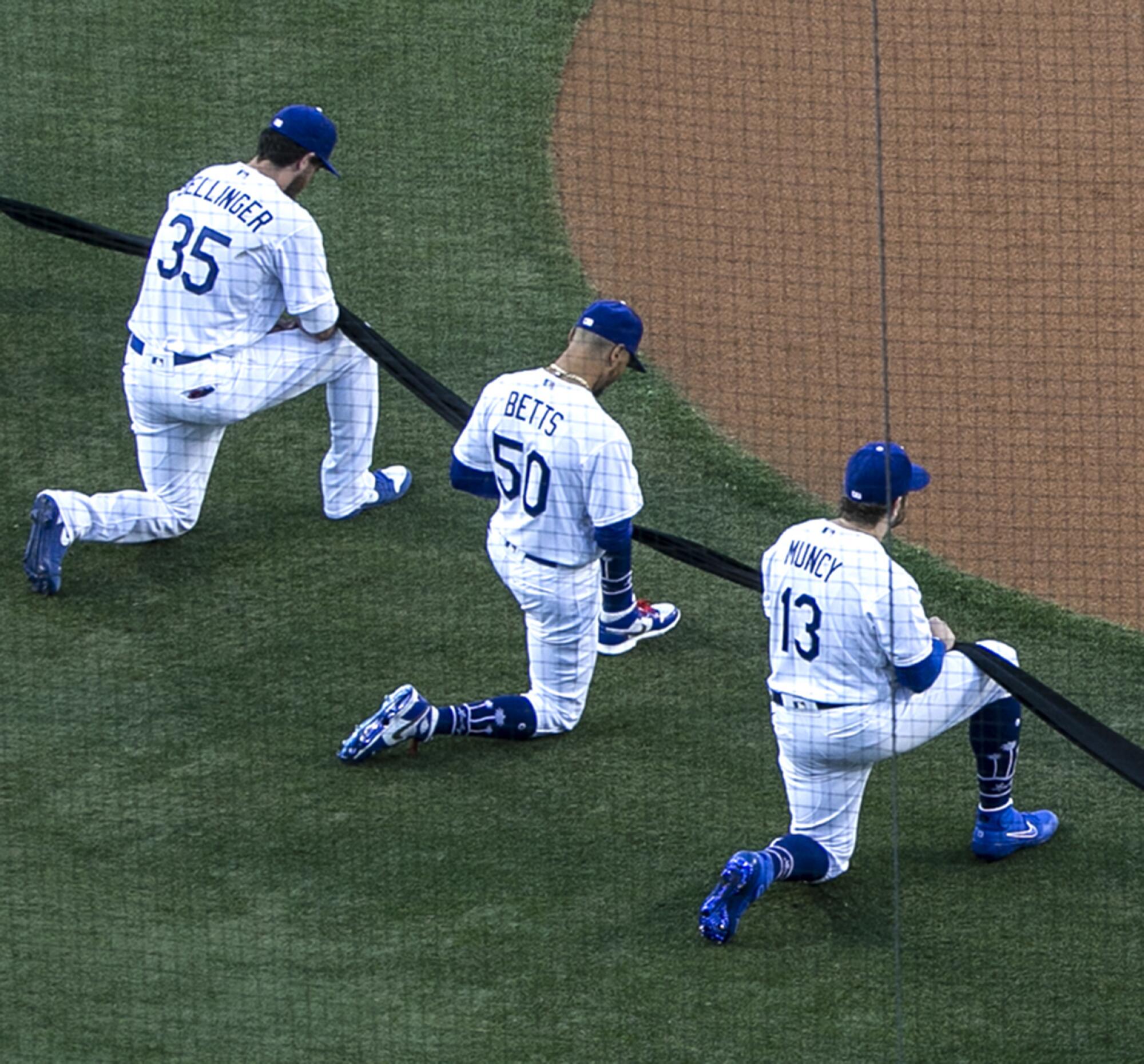Photos: Motel California, the delight is in the details
I am a photo fellow at the L.A. Times, and recently spent three days photographing for the Motel California project at the Skyview Los Alamos. What immediately struck me was how tucked away in the hills the motel was, even with its close proximity to the freeway. While only two hours away from L.A., I felt like I was in a totally different place.
I captured the iconic yellow “Motel” sign by the pool, the turquoise Moke shuttle, and lots of unique fixtures. Having three days to photograph an assignment is rare in daily news, so I felt lucky to be able to spend more time in certain spots of the property and reshoot in different lighting situations. Good light is critical to making a good photo, so I made the most of golden hour during my visit. All of the pops of orange, yellow and teal around the property complemented warm light well. I loved that most of the plants were succulents and cactuses, giving the place a desert feel on the Central Coast. When I look at all the photos as a whole, I feel the sense of calm and warmth I experienced while I was there.
— Juliana Yamada, photography fellow
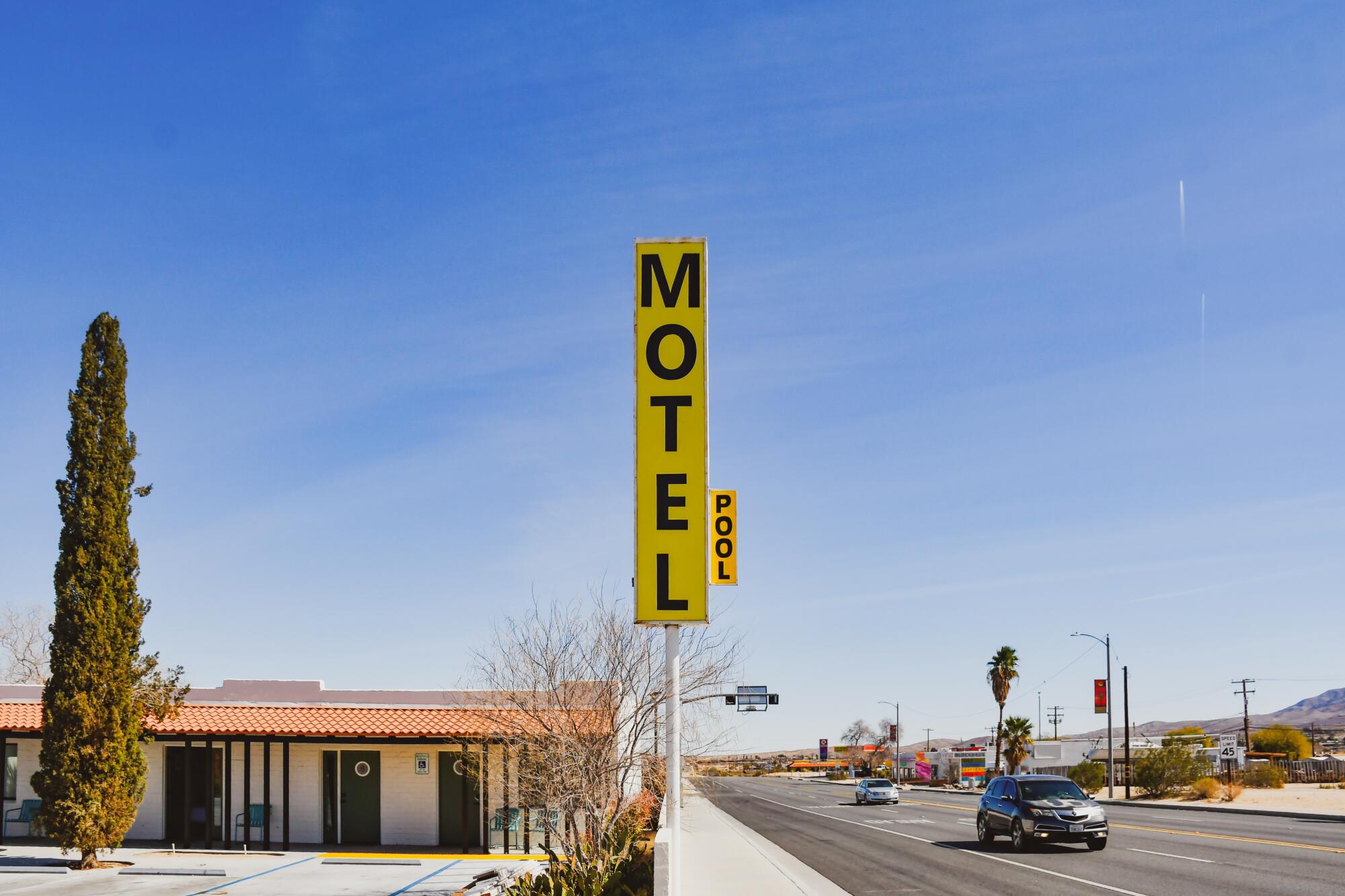
Ramsey 29 motel in Twentynine Palms. Owner Ashton Ramsey took over a motor lodge that dates to the 1940s.
(Christopher Reynolds / Los Angeles Times)
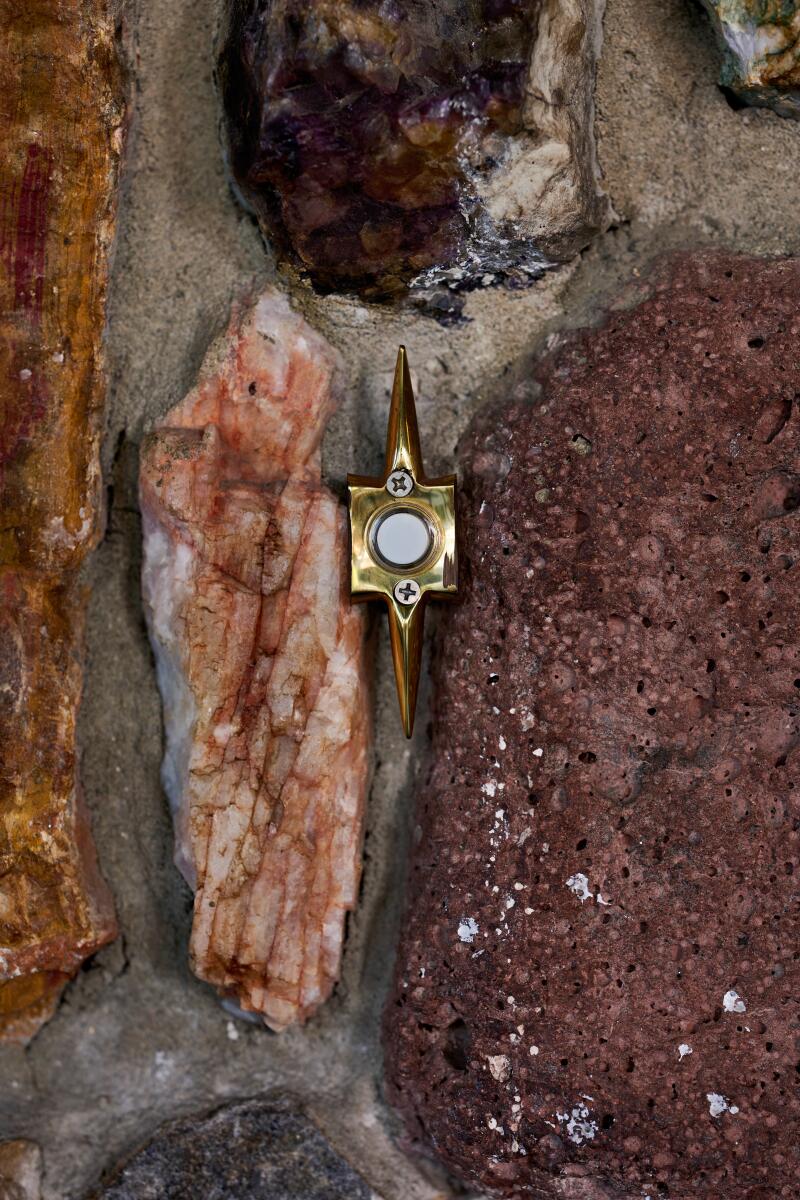
Rocky details at the Pearl. (Megan Morello / For The Times)
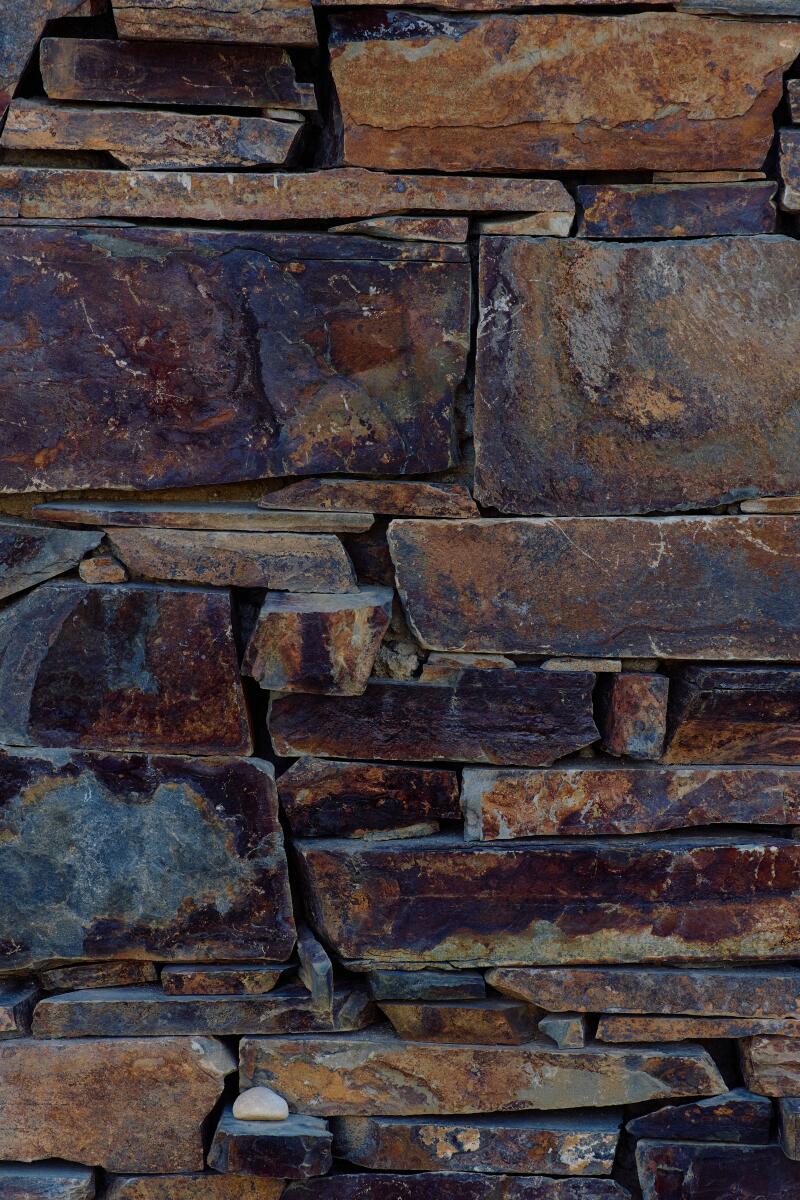
Decorative brick from the Mojave Sands Motel in Joshua Tree. (David Fouts / For The Times)
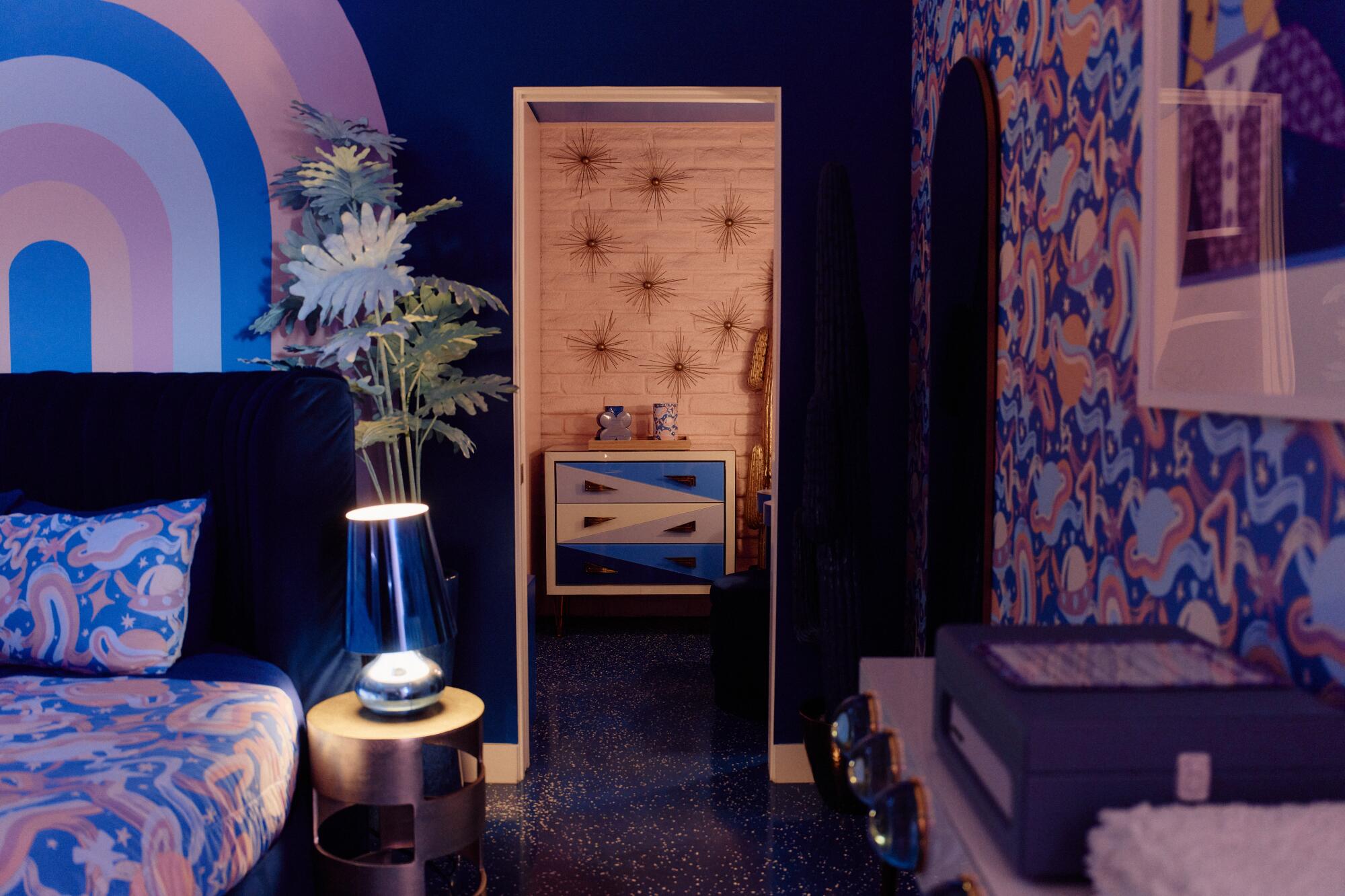
The Atomic Bombshell Room at the Trixie Motel.
(David Fouts / For The Times)
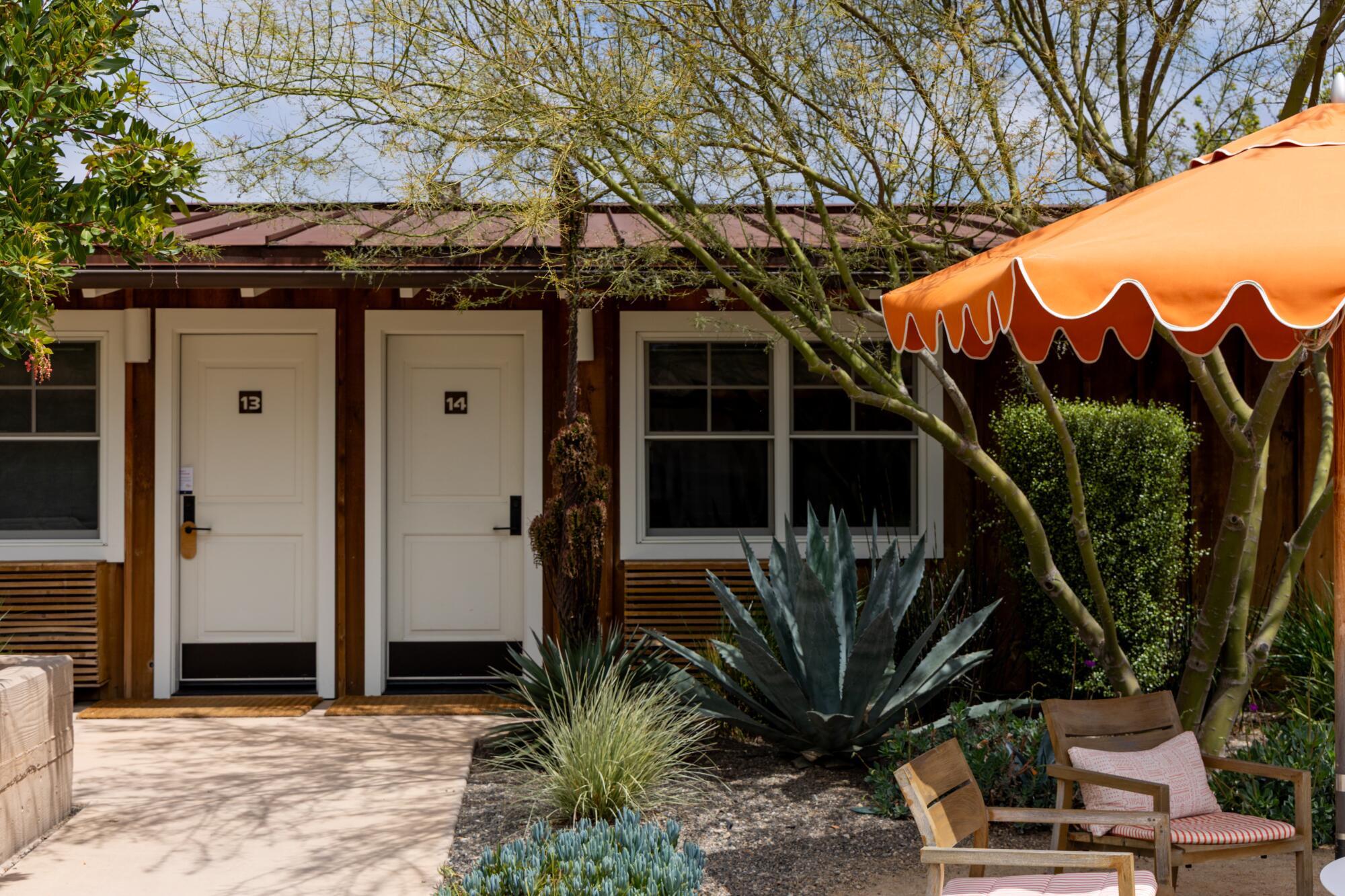
Rooms 13 and 14 at the Skyview Motel.
(Juliana Yamada / Los Angeles Times)
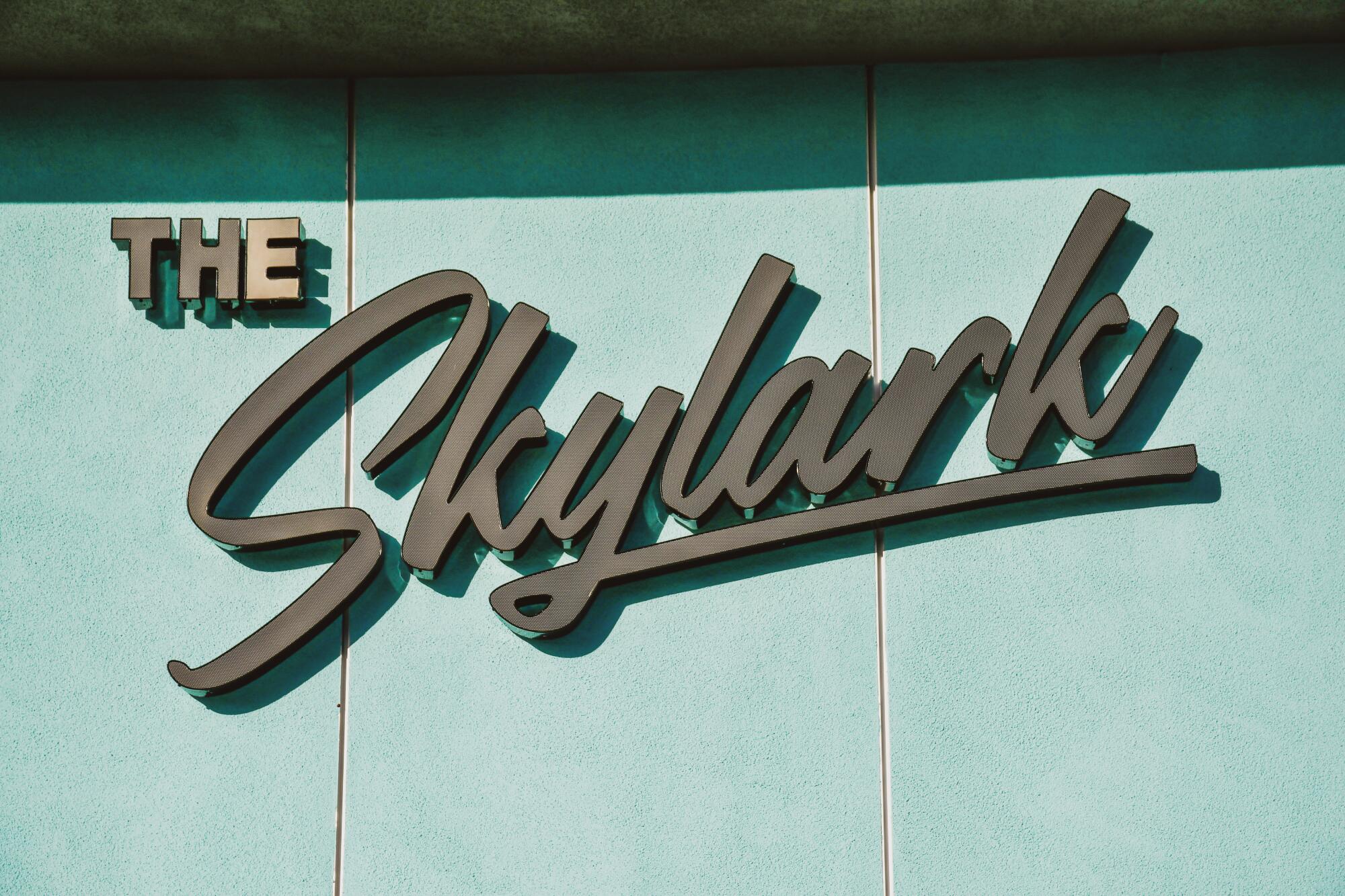
The Skylark Hotel sign in Palm Springs.
(Christopher Reynolds / Los Angeles Times)
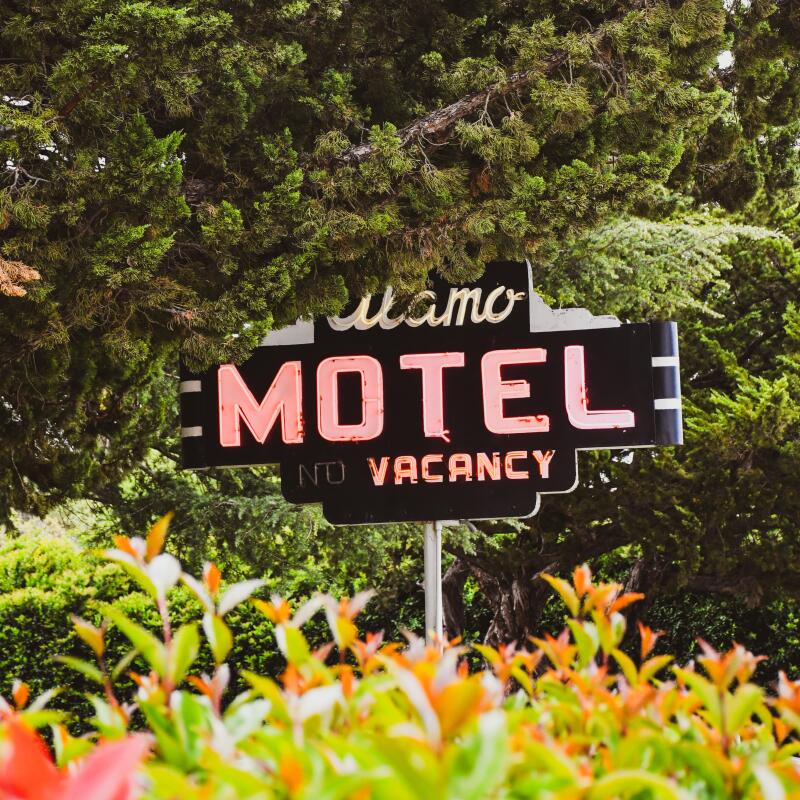
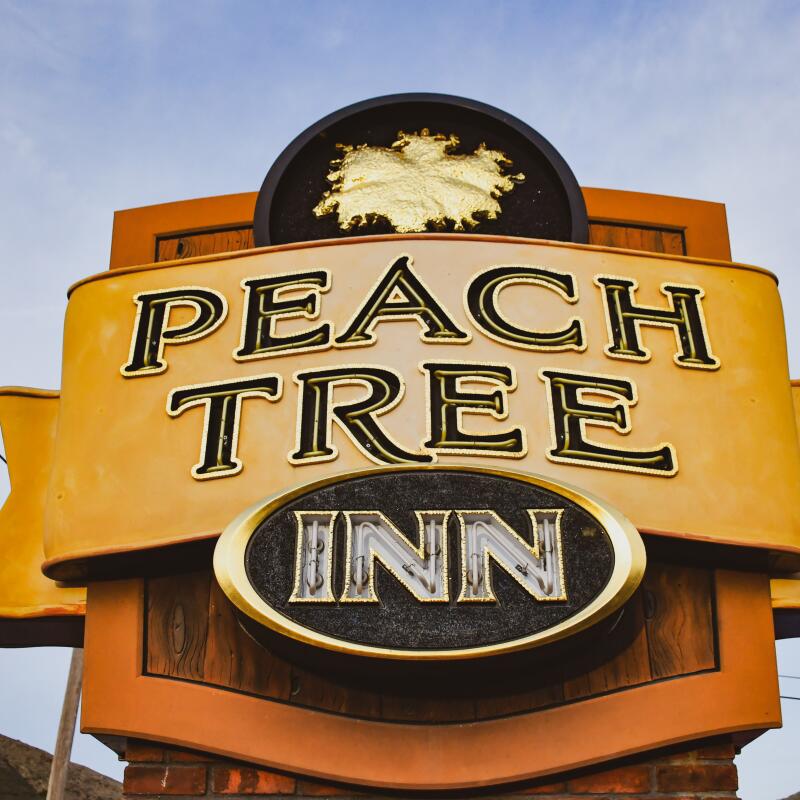
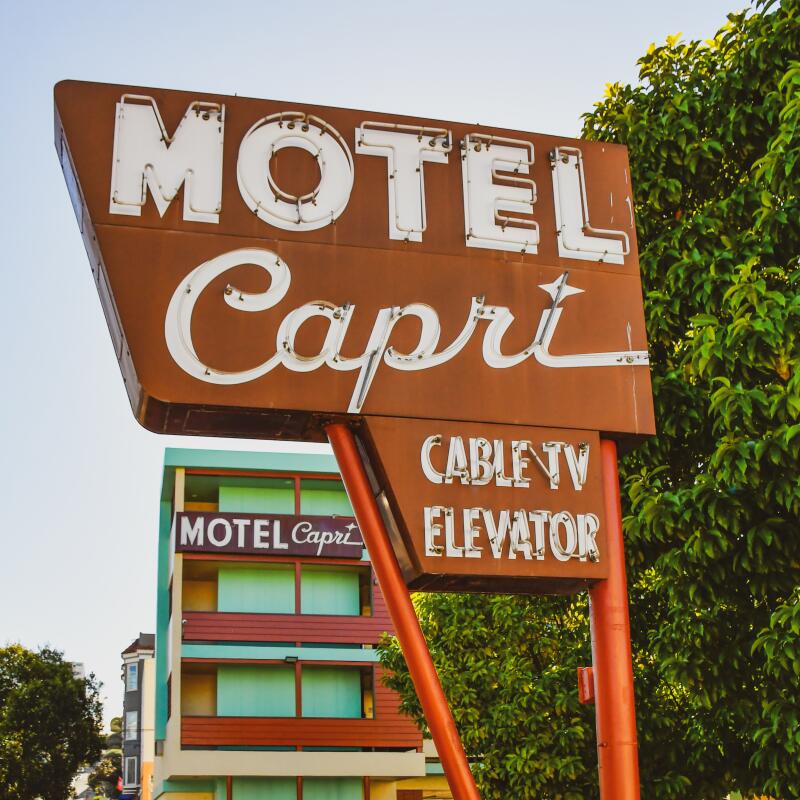
Alamo Motel sign in Los Alamos, from left. Peach Tree Inn sign in San Luis Obispo. Motel Capri sign in San Francisco. (Christopher Reynolds / Los Angeles Times)
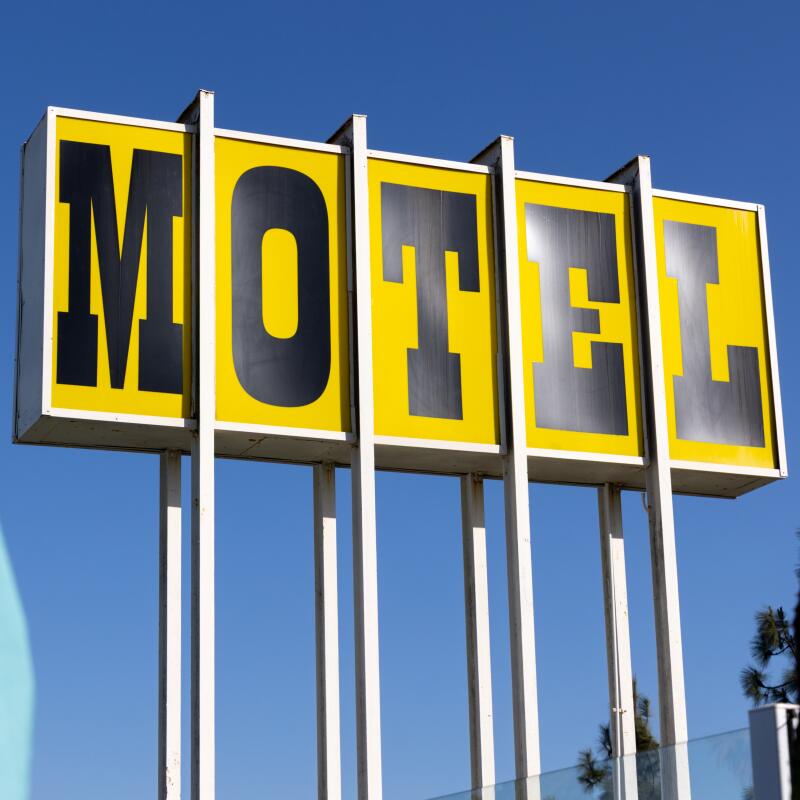
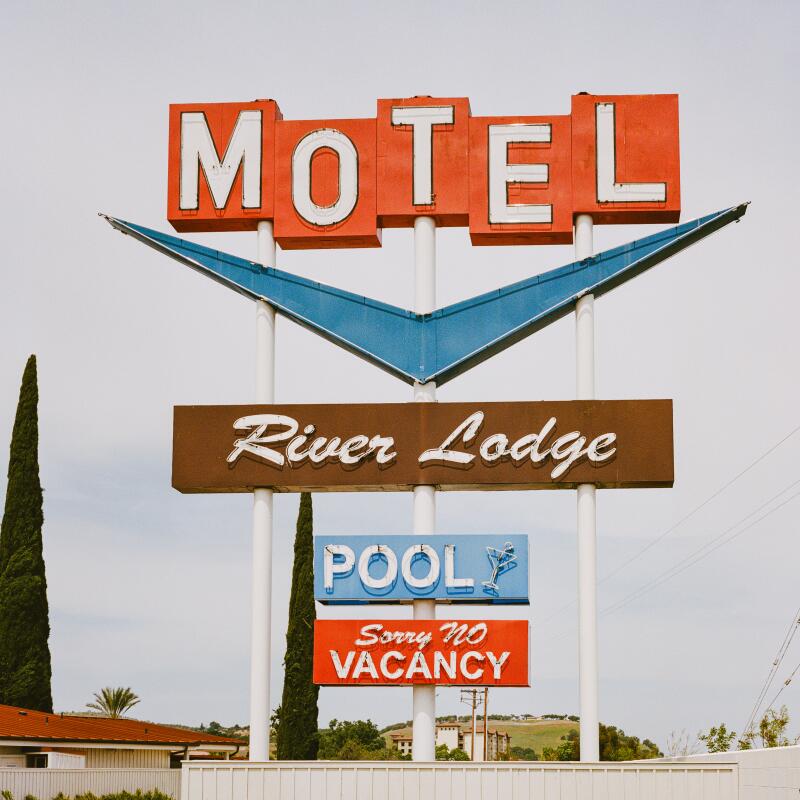
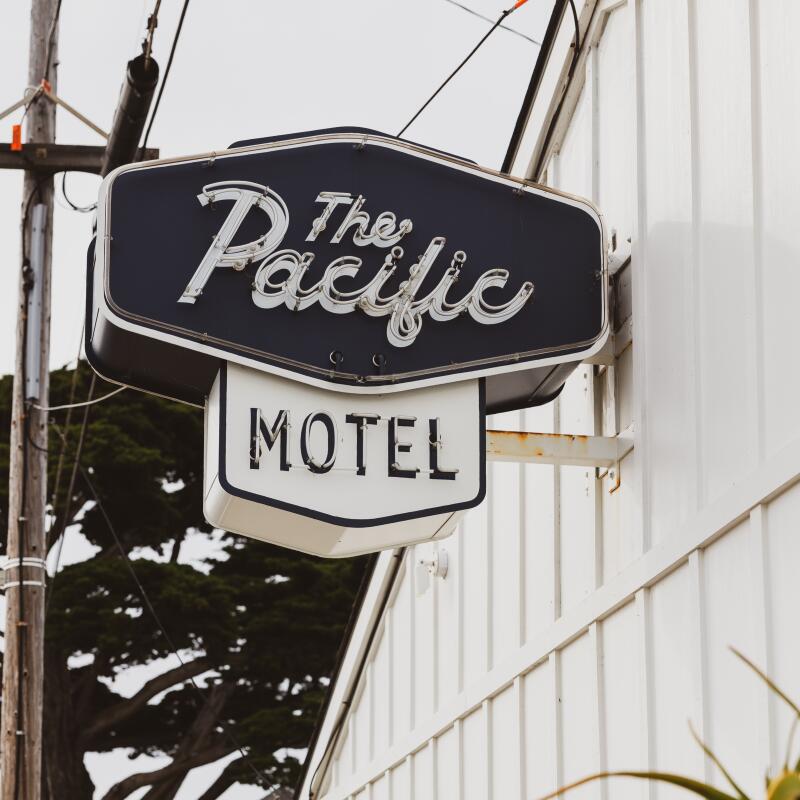
The Skyview Motel sign, from left. The River Lodge sign in Paso Robles. The Pacific Motel sign in Cayucos. (Juliana Yamada / Los Angeles Times; Jacob Tovar / For The Times)
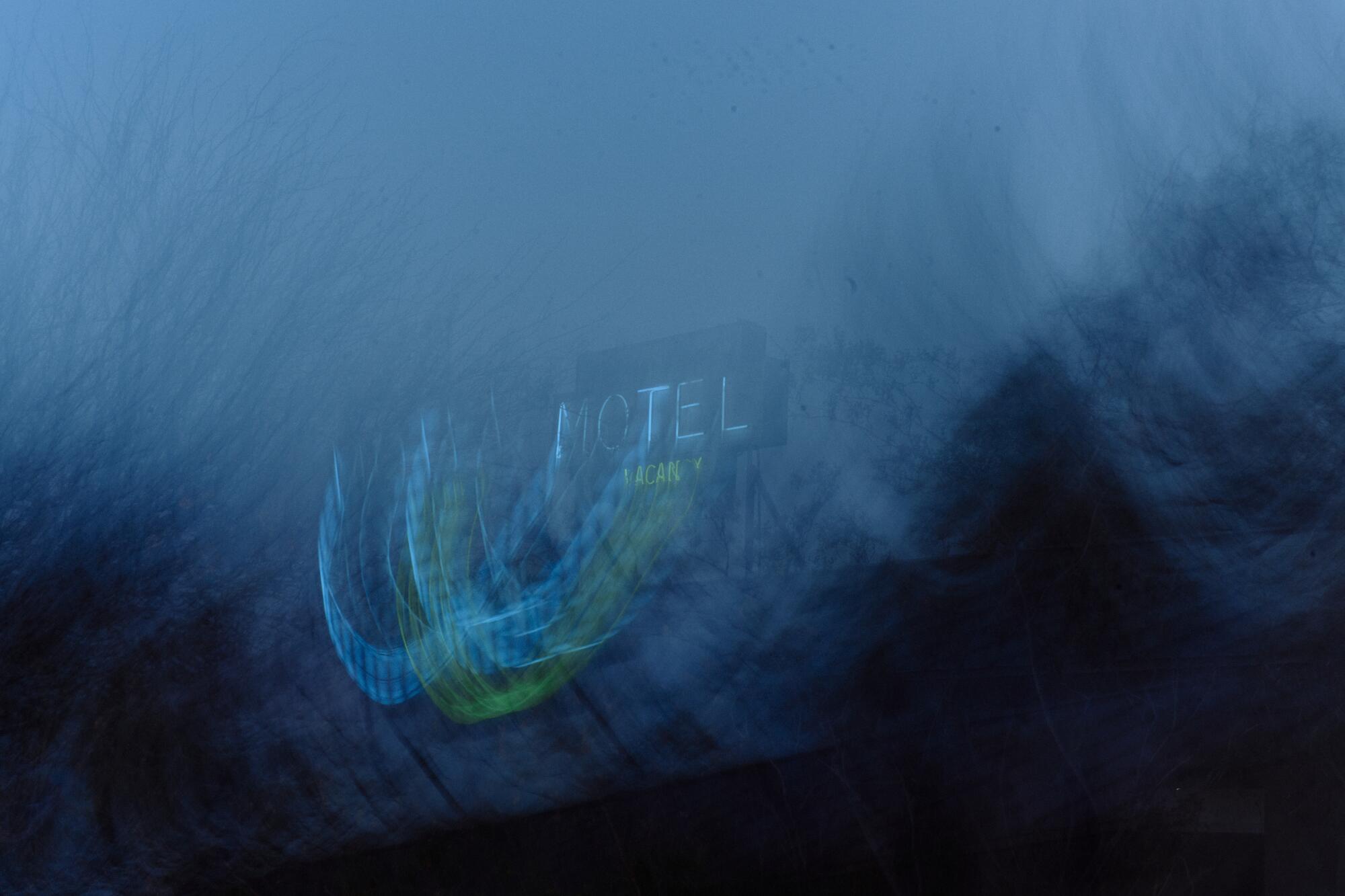
The Mojave Sands Motel sign.
(David Fouts / For The Times)
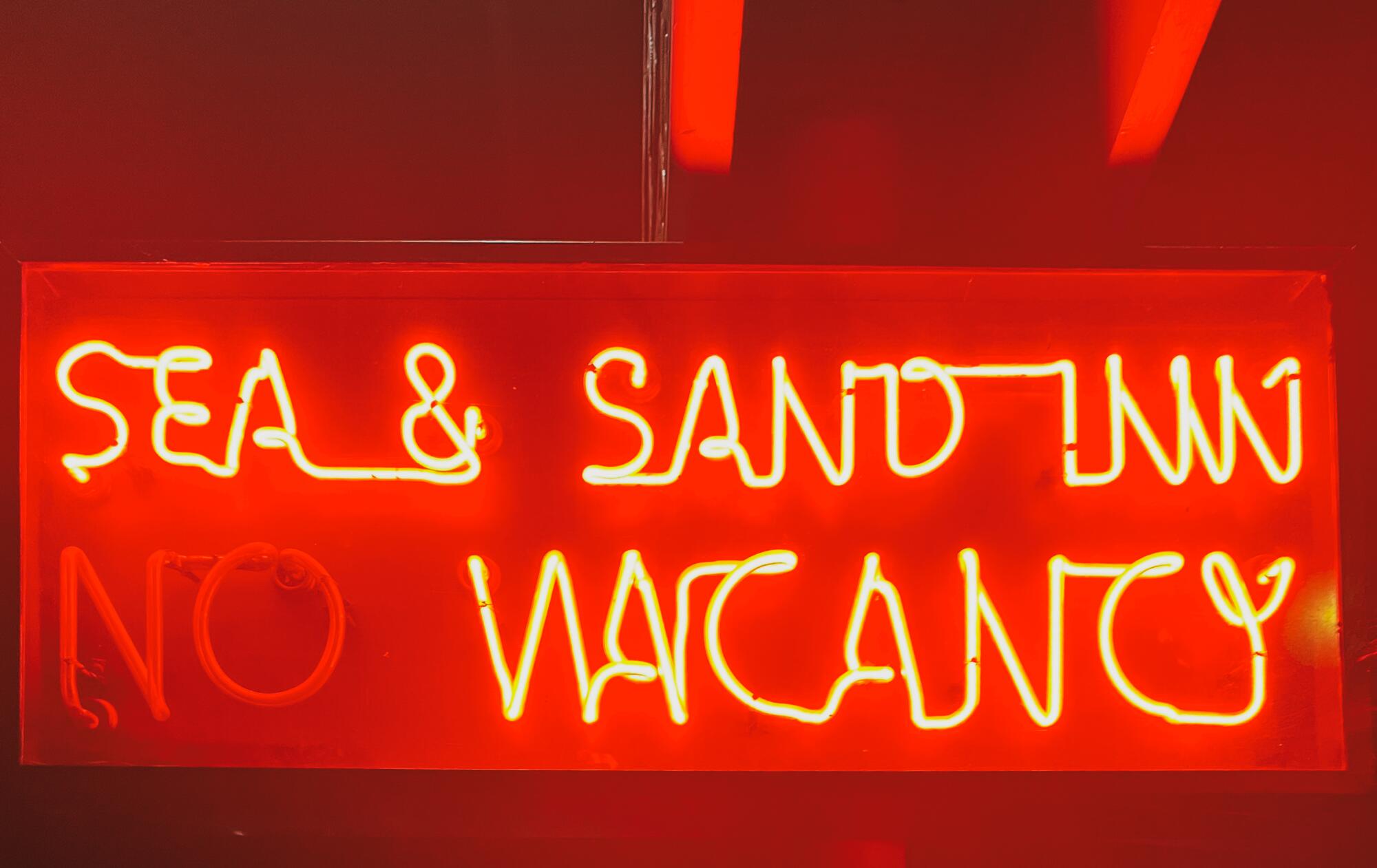
The Sea & Sand Inn’s no vacancy/vacancy sign in Santa Cruz.
(Christopher Reynolds / Los Angeles Times)
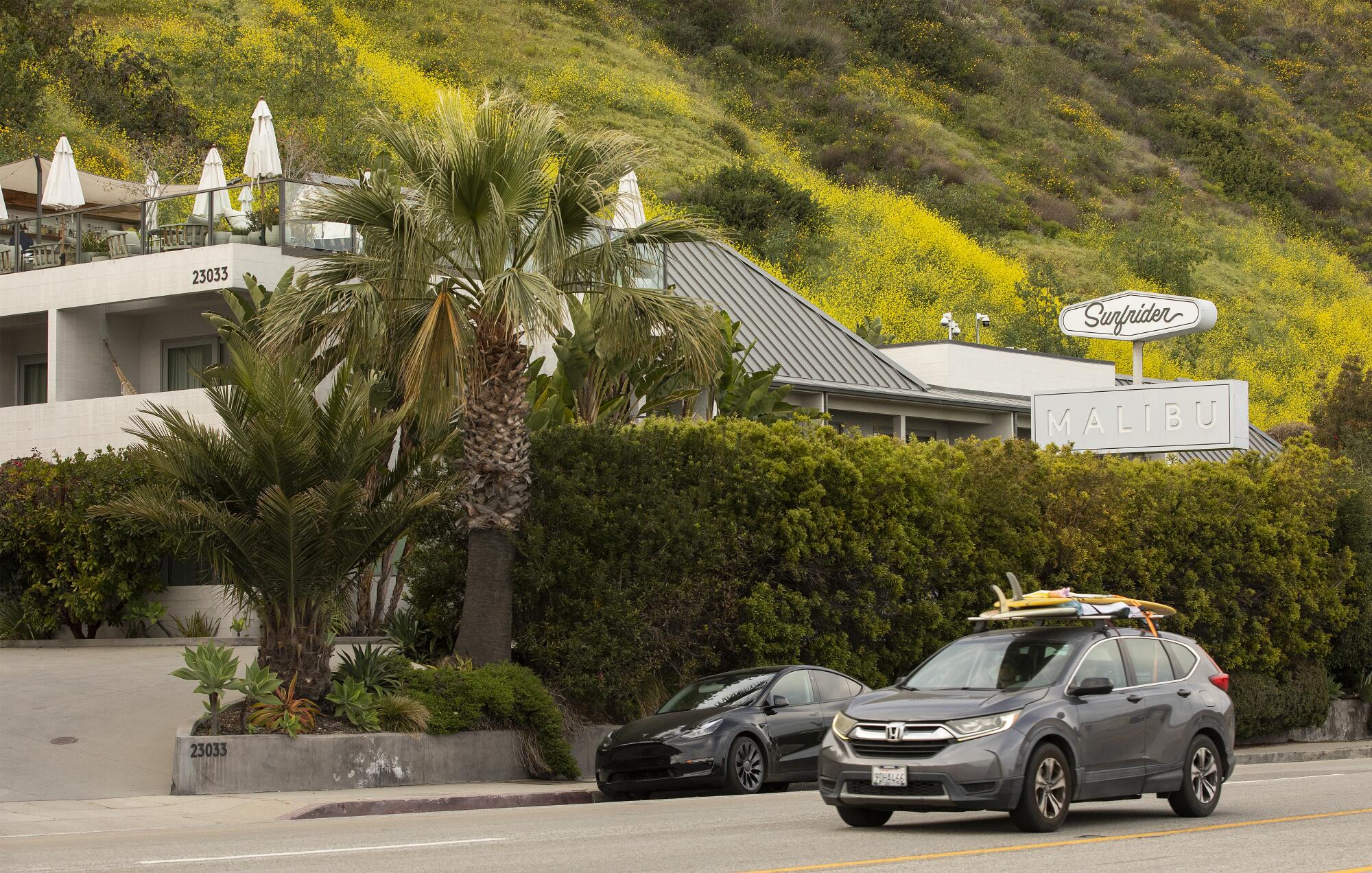
The Surfrider Malibu as seen from the Pacific Coast Highway.
(Al Seib / For The Times)
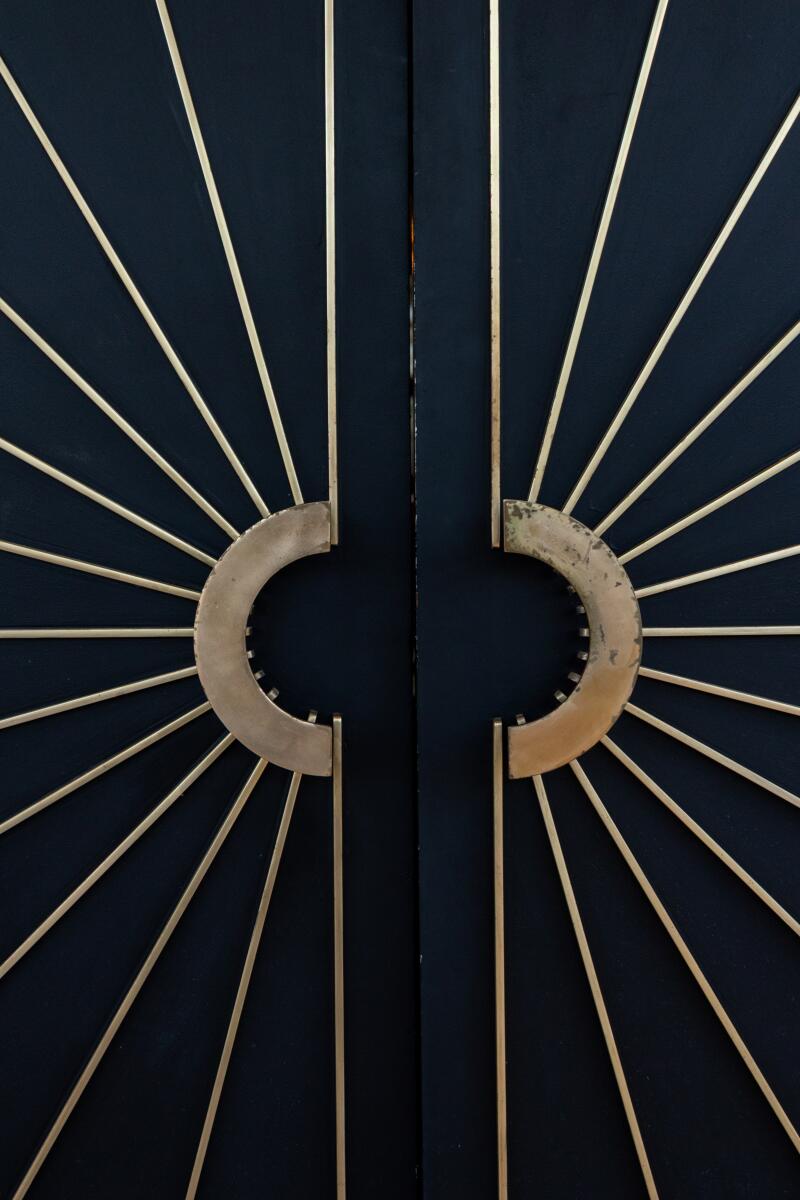
The entrance to the Norman restaurant at the Skyview Motel.
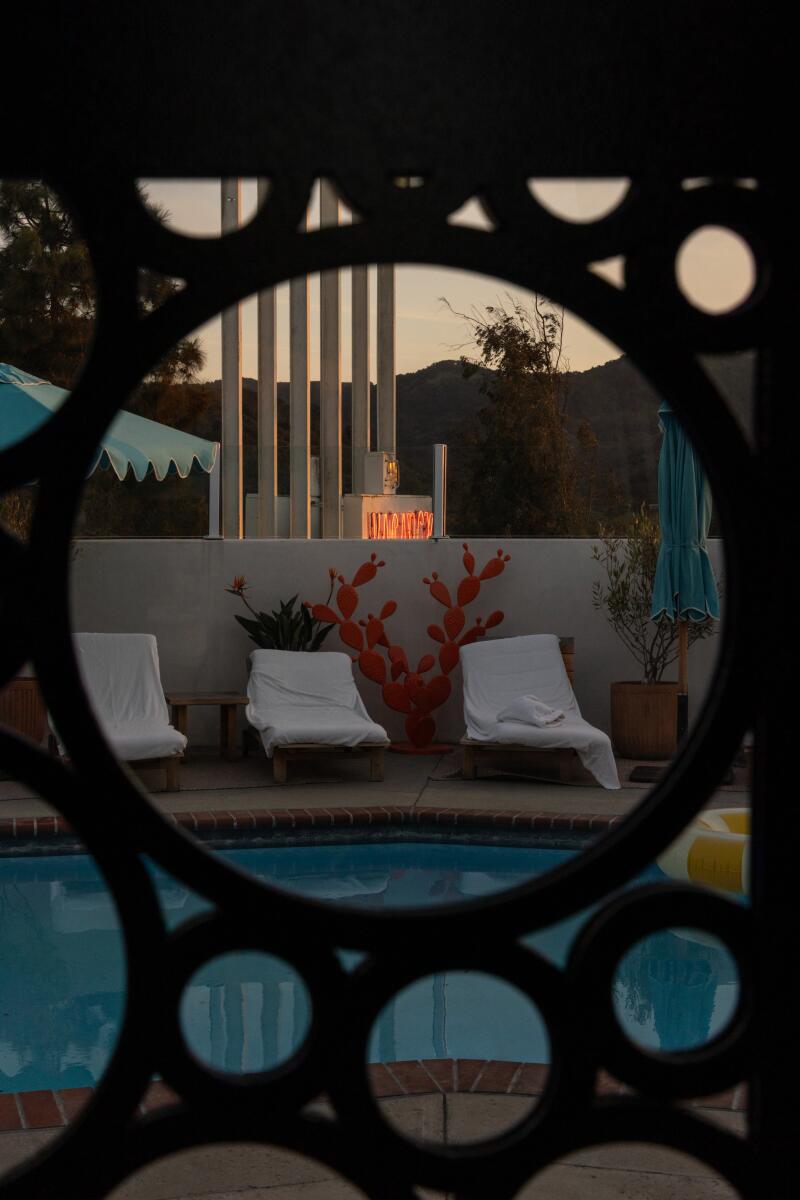
The pool viewed through decorative pool-side furnishings at the Skyview Motel. (Juliana Yamada / Los Angeles Times)
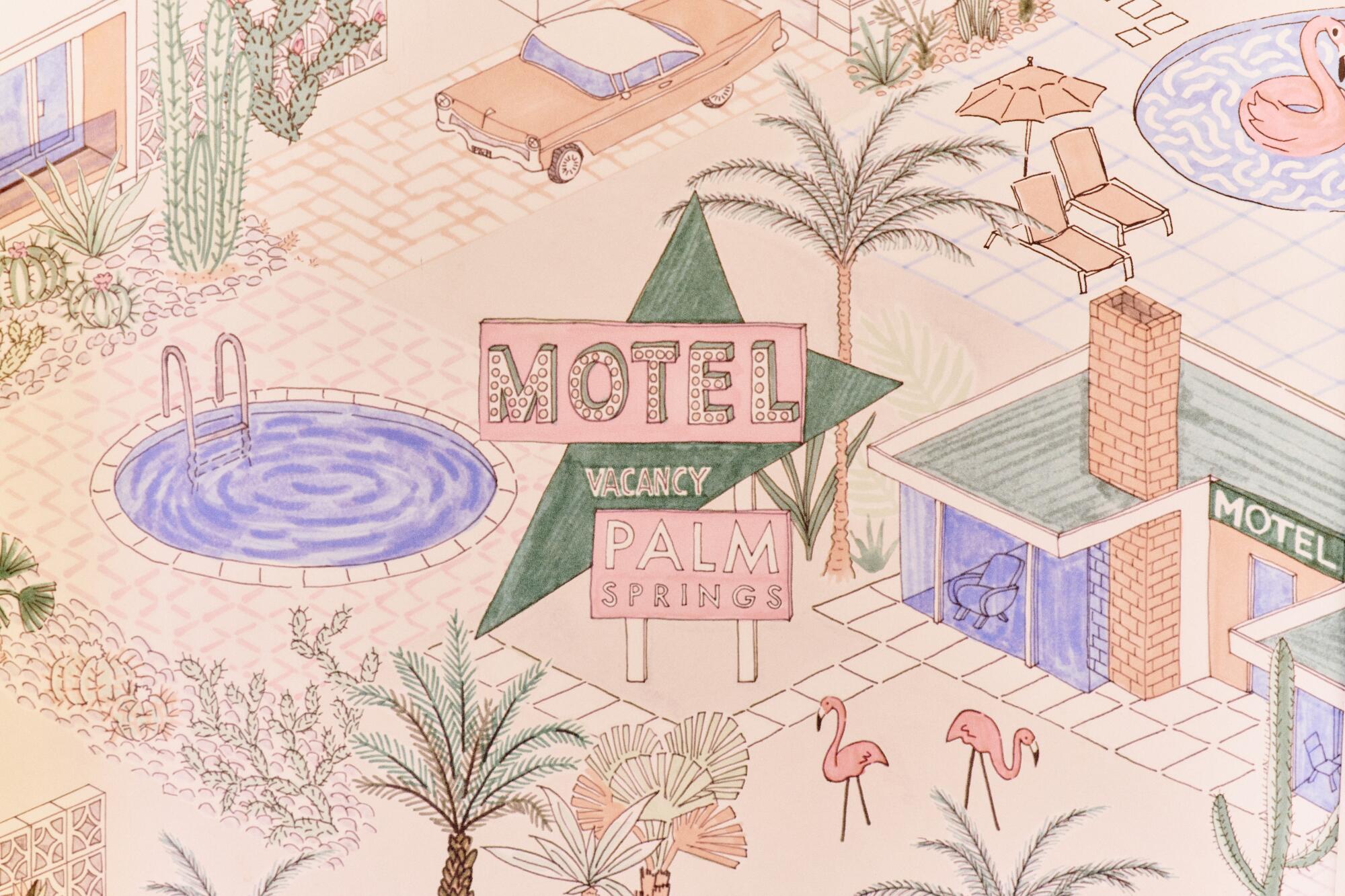
Wallpaper inside the Trixie Motel.
(David Fouts / For The Times)
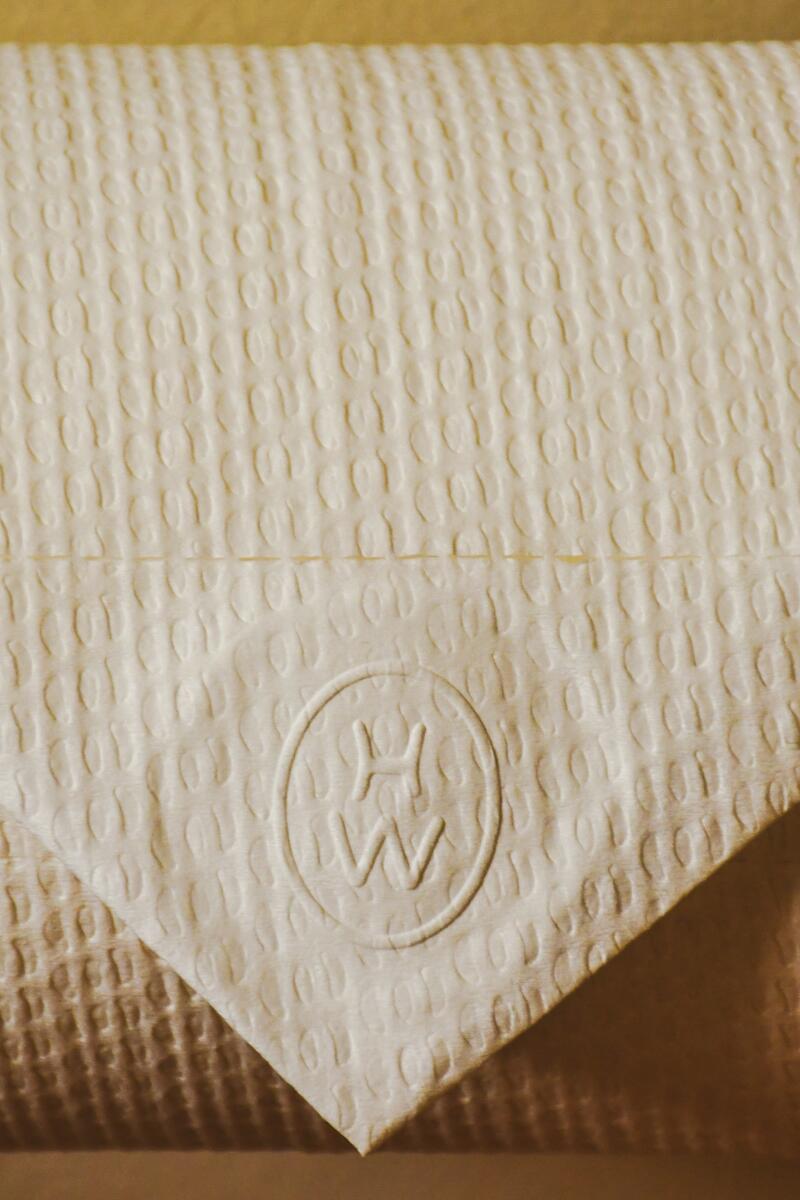
The toilet paper at the Hotel Wren is marked with its initials. (Christopher Reynolds / Los Angeles Times)
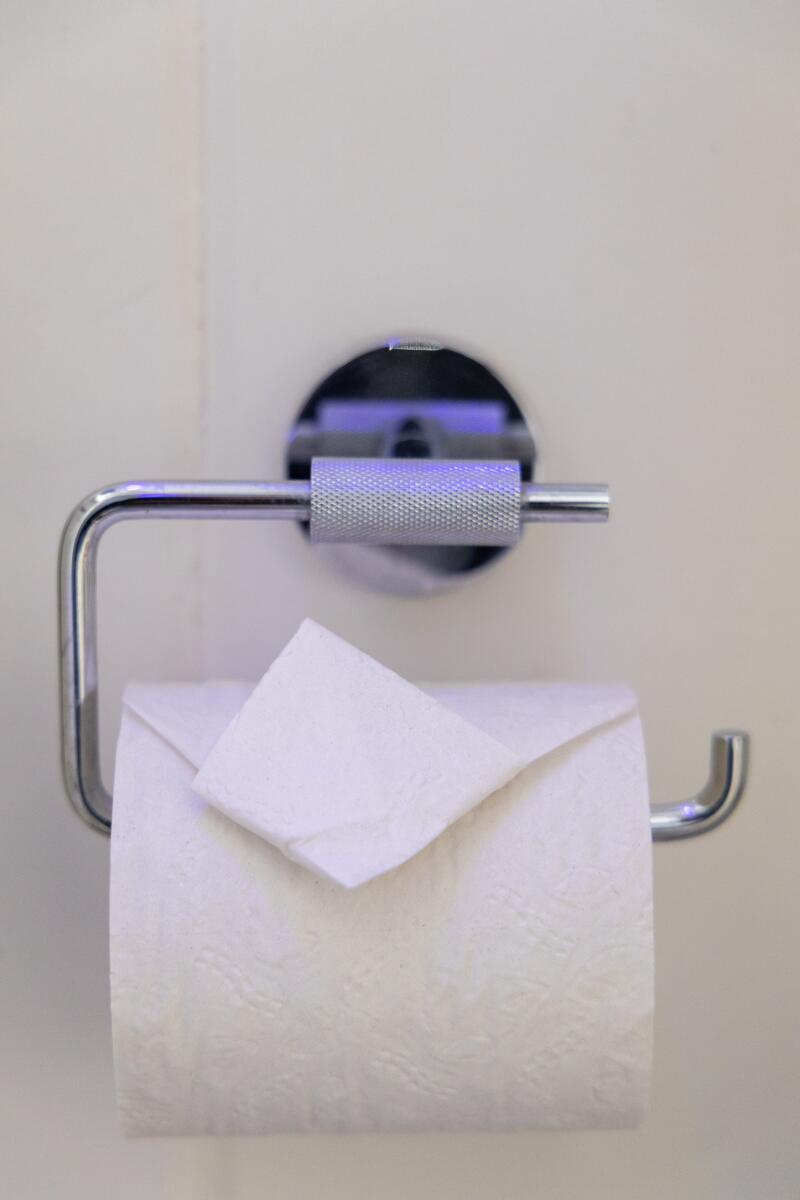
Folded toilet paper at the Skyview Motel. (Juliana Yamada / Los Angeles Times)
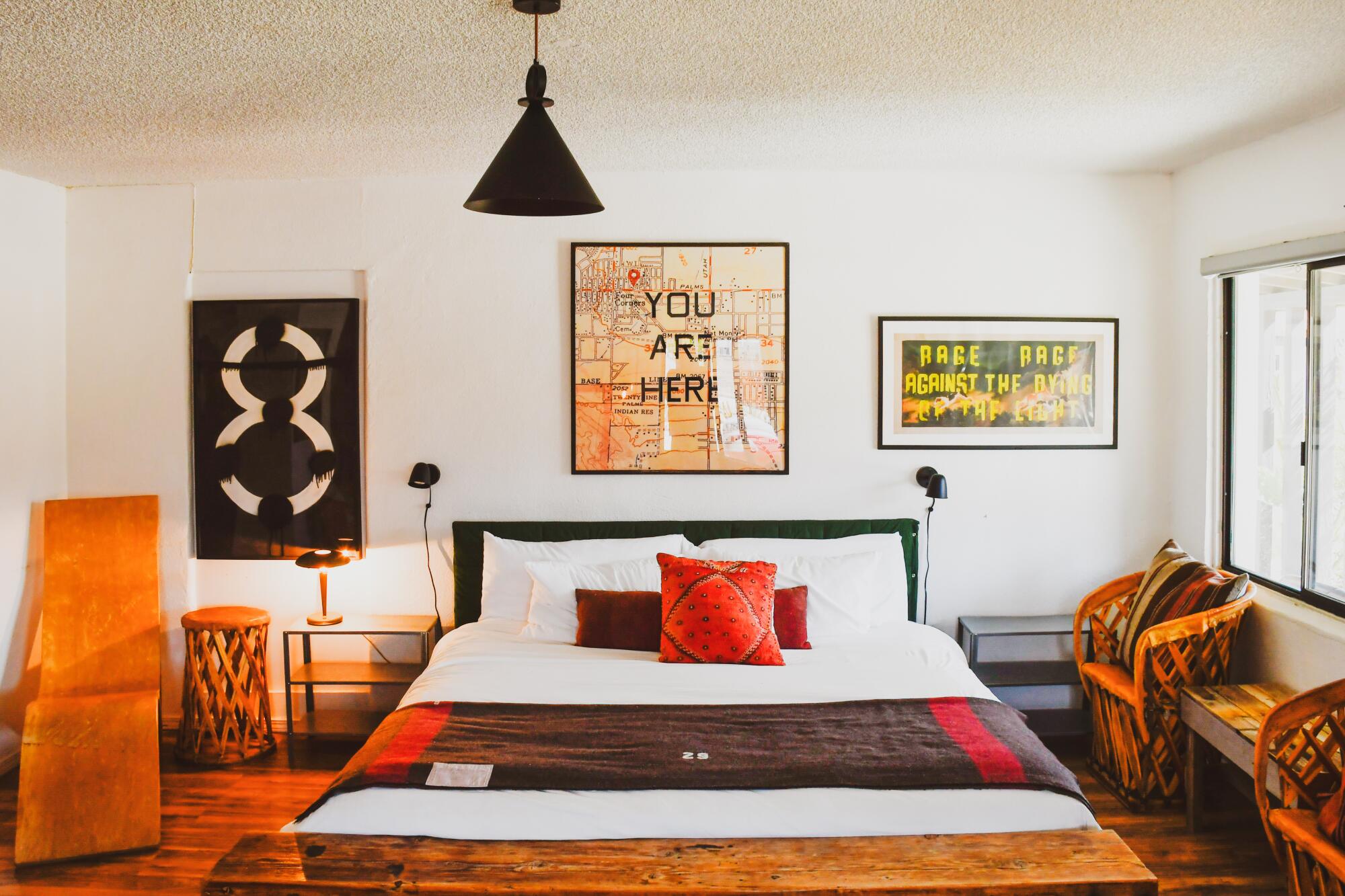
A view of a room inside the Ramsey 29 motel in Twentynine Palms.
(Christopher Reynolds / Los Angeles Times)
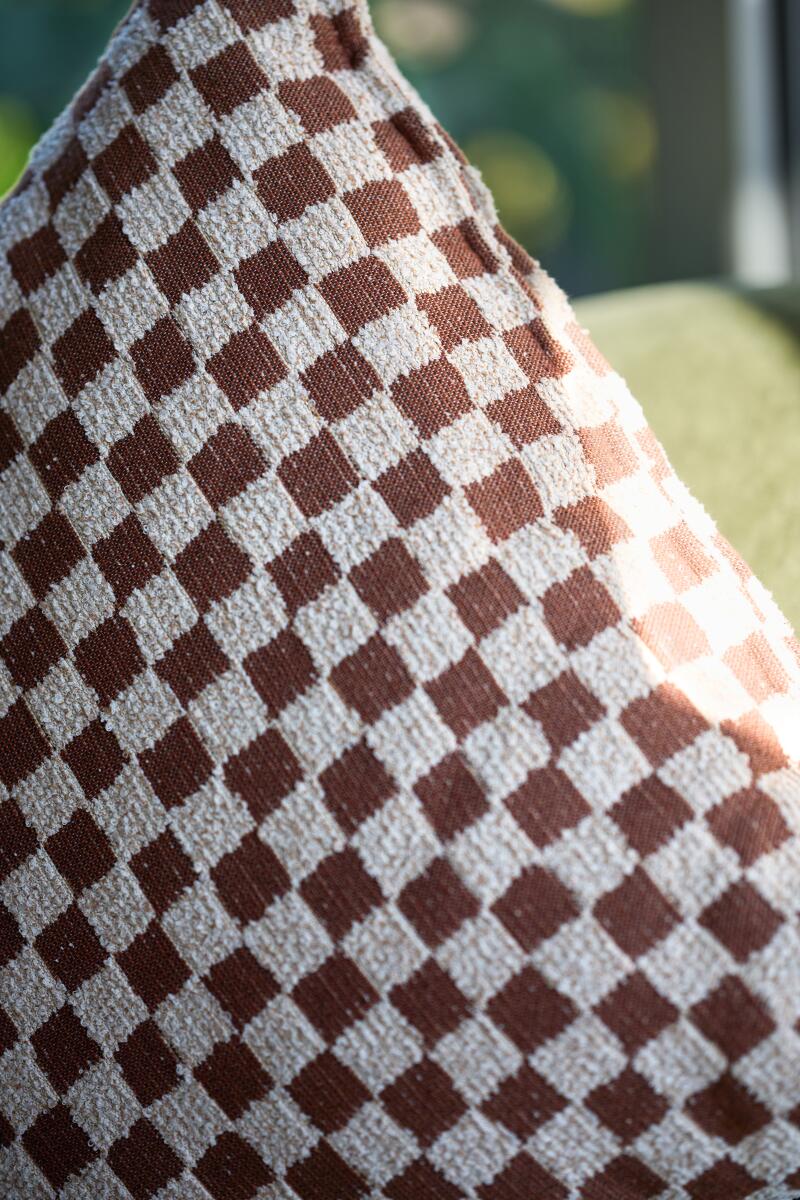
A detail of a patio pillow at The Pearl Hotel. (Megan Morello / For The Times)
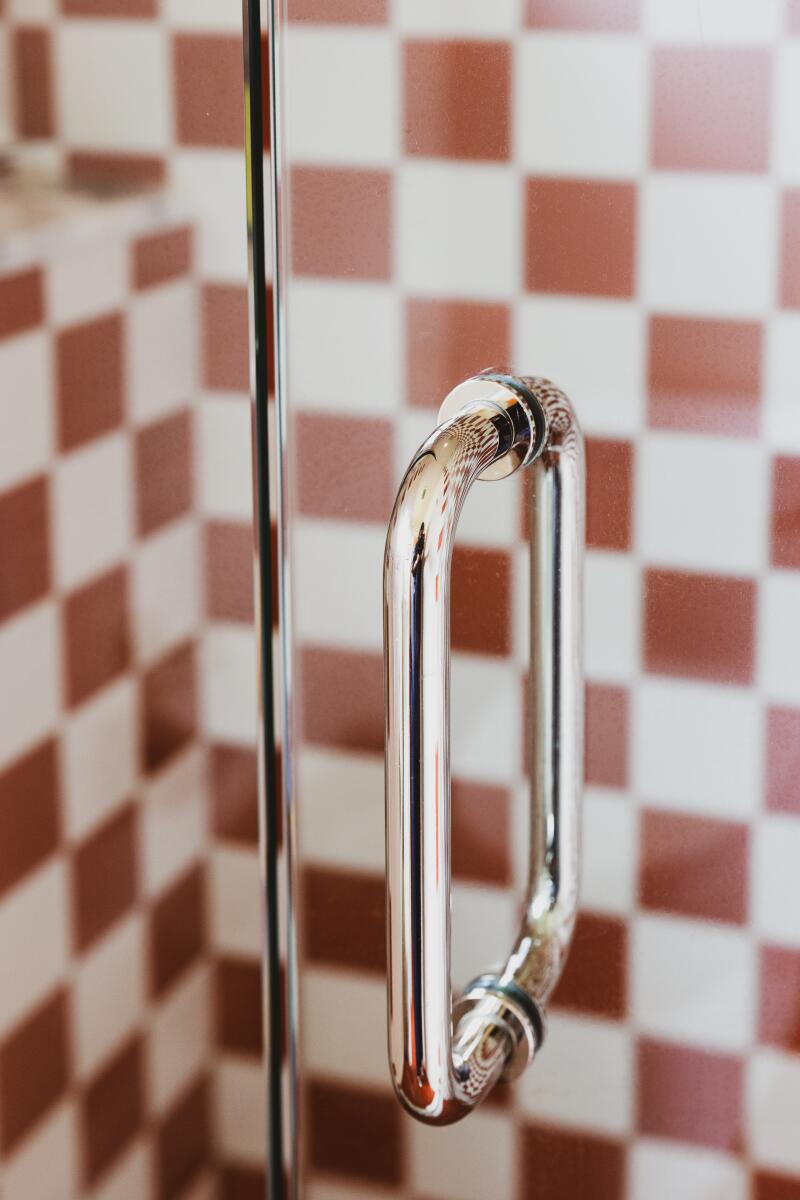
A detail of the shower handle in a room at the River Lodge. (Jacob Tovar / For The Times)
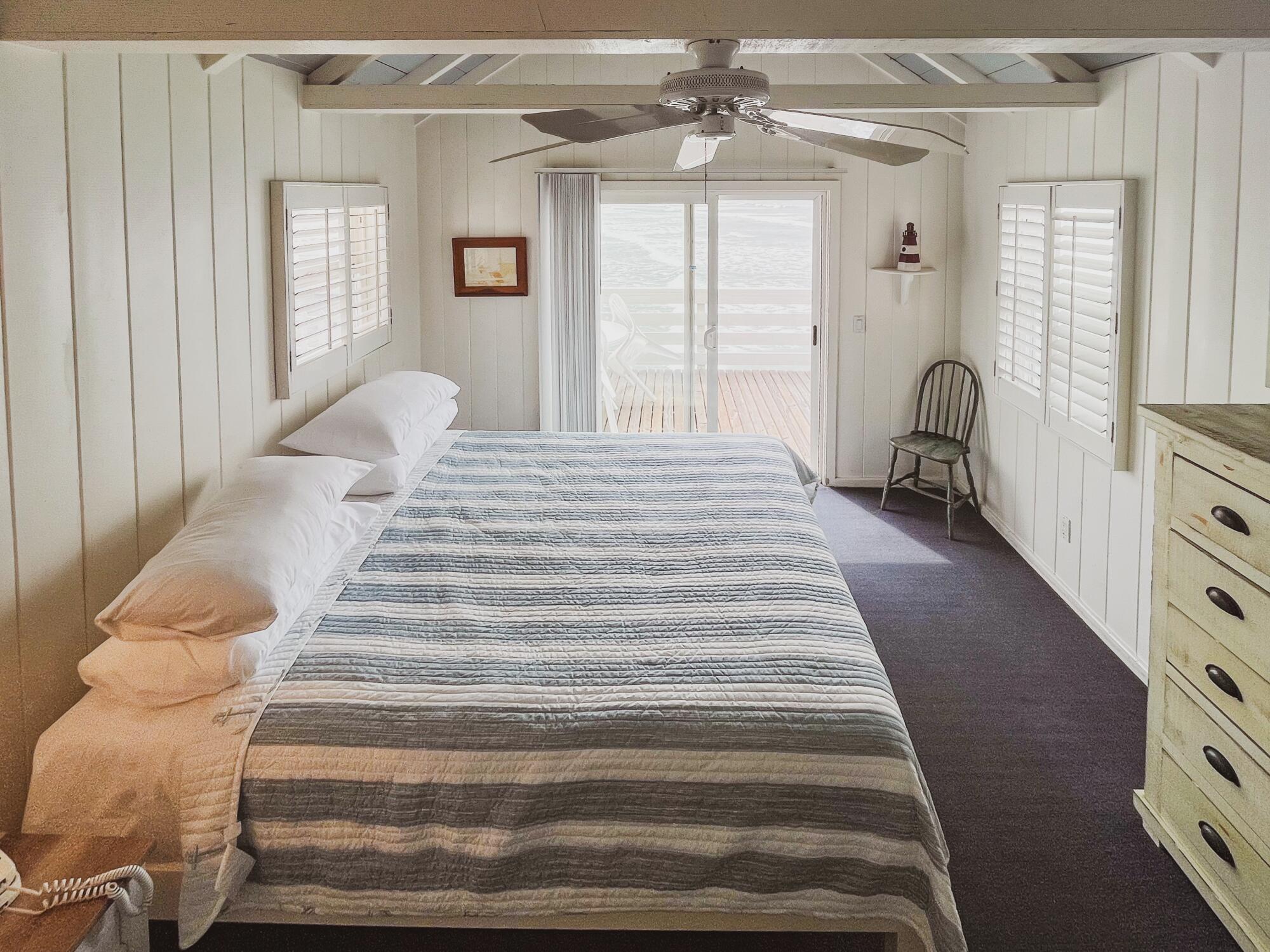
A room inside the Crystal Pier Hotel in Pacific Beach, San Diego.
(Christopher Reynolds / Los Angeles Times)
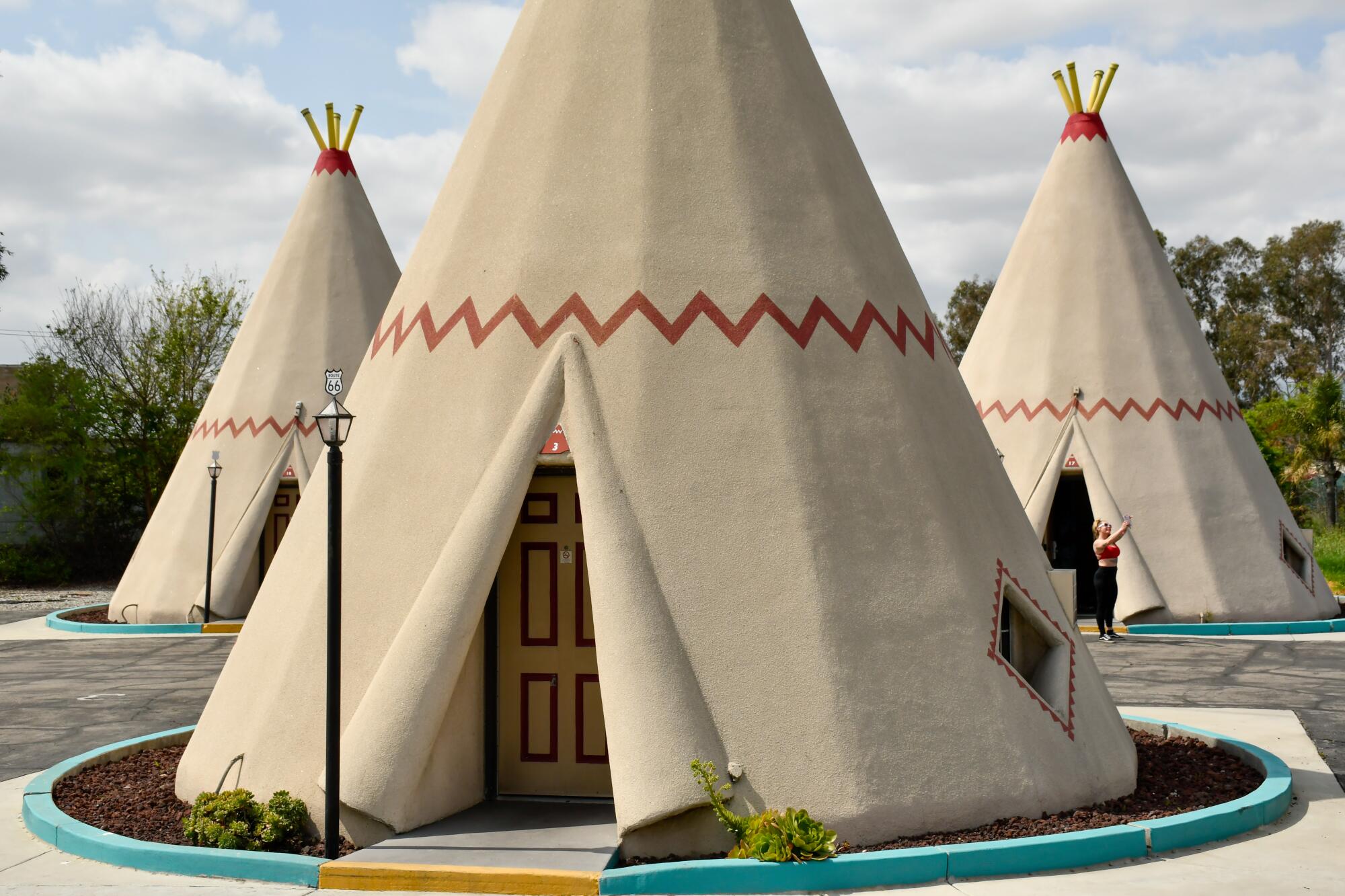
The Wigwam Motel buildings in San Bernardino.
(Christopher Reynolds / Los Angeles Times)
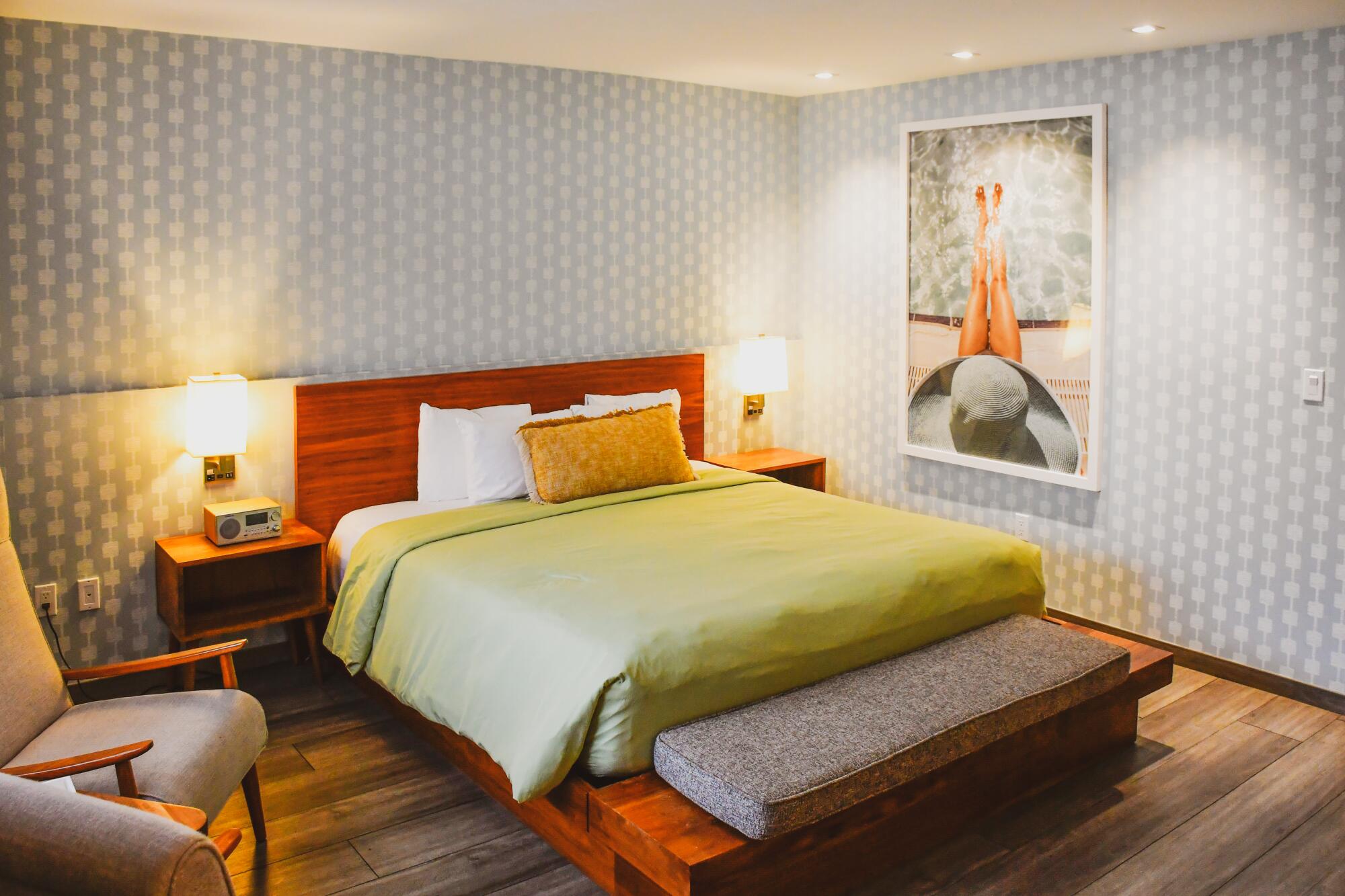
A room at the Skylark Hotel.
(Christopher Reynolds / Los Angeles Times)
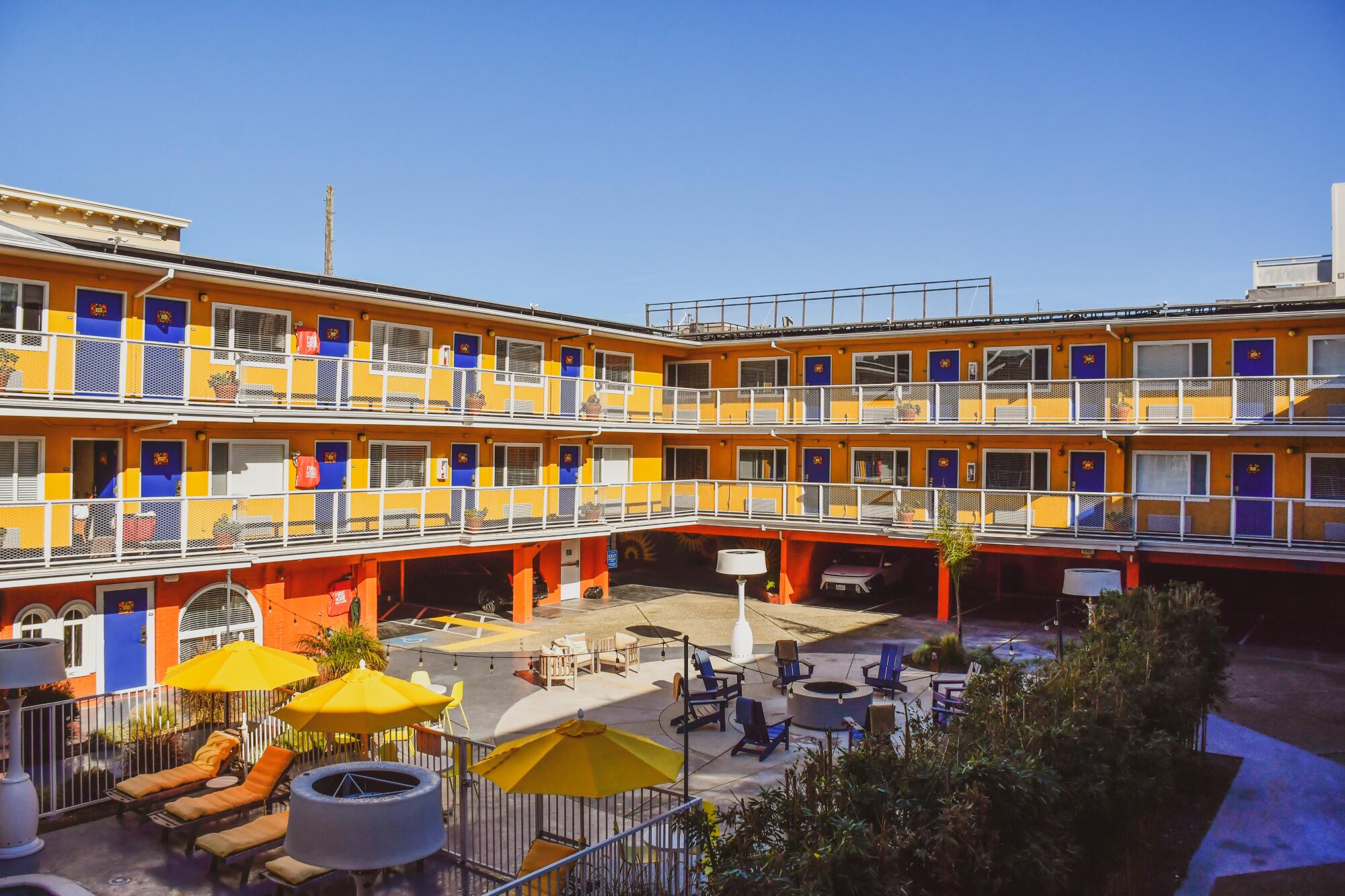
The Hotel del Sol is a boutique hotel in San Francisco aiming to rise above its roots as a budget motel.
(Christopher Reynolds / Los Angeles Times)
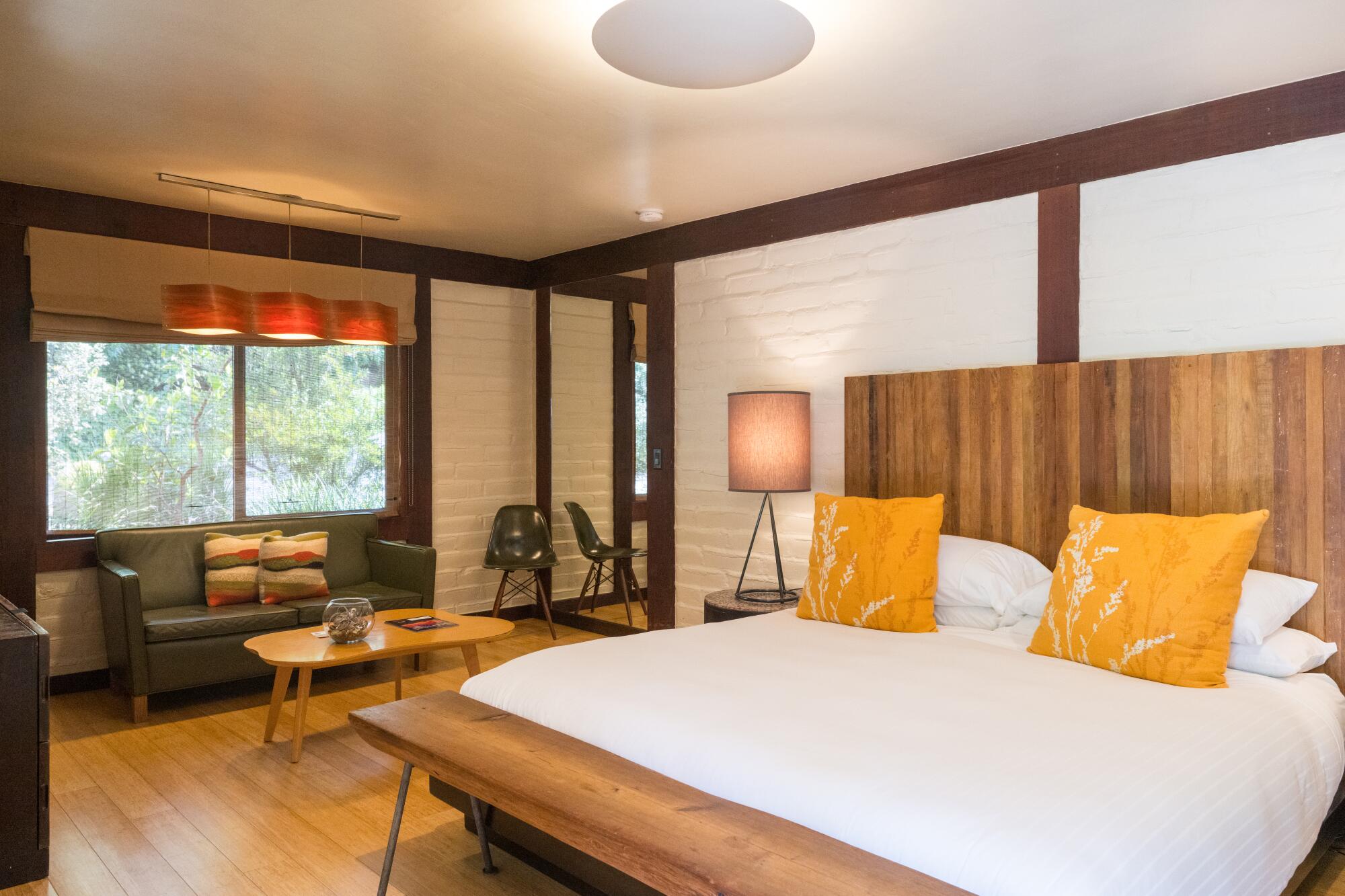
A room at Glen Oaks Hotel in Big Sur.
(Nic Coury / For The Times)
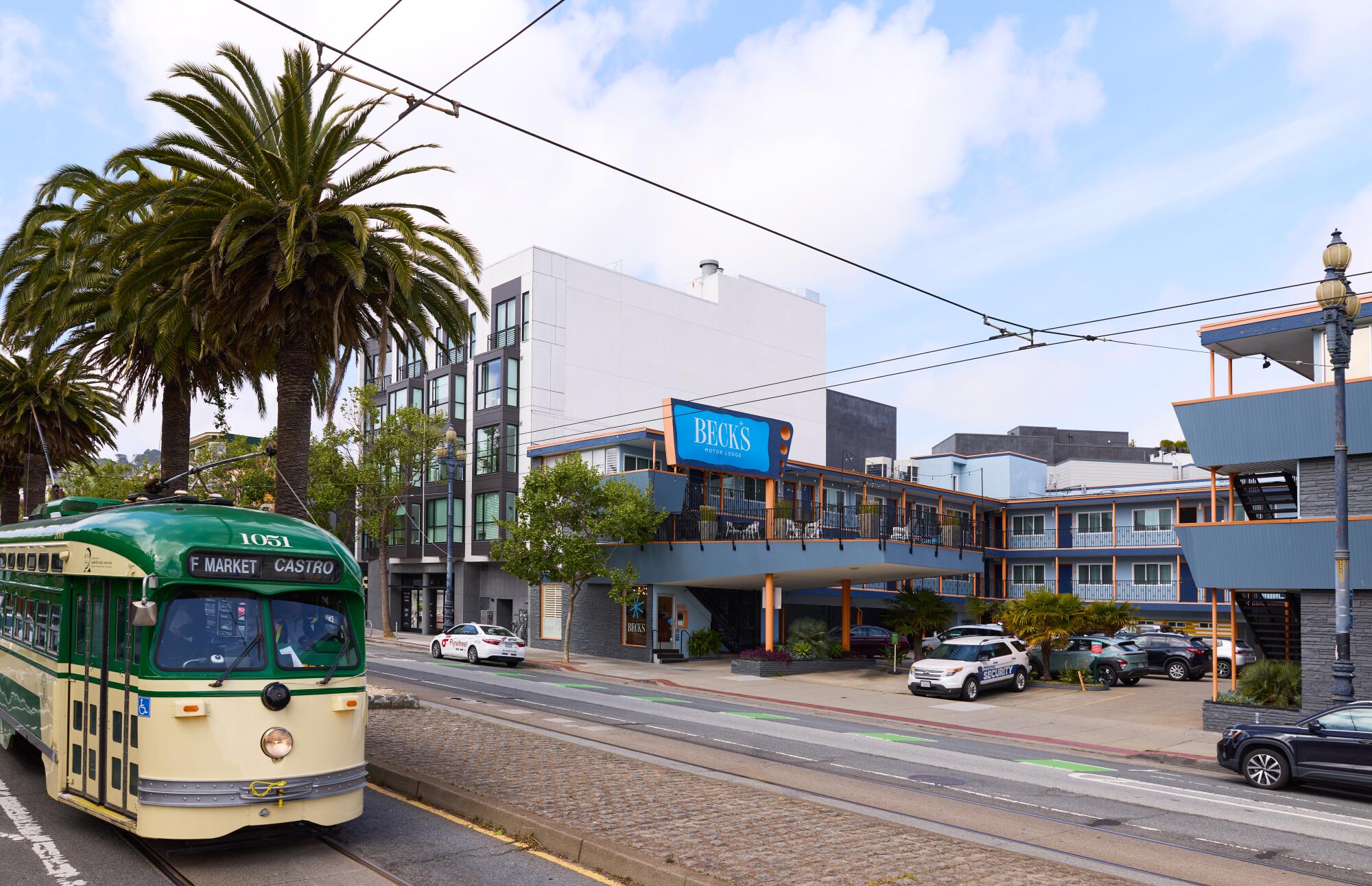
Situated on Market Street, Beck’s has a front-row seat to the main artery of San Francisco. The motel still offers free on-site parking, with a walkable location that provides ample access to public transportation, including the historic F-Market line.
(Megan Bayley / For The Times)
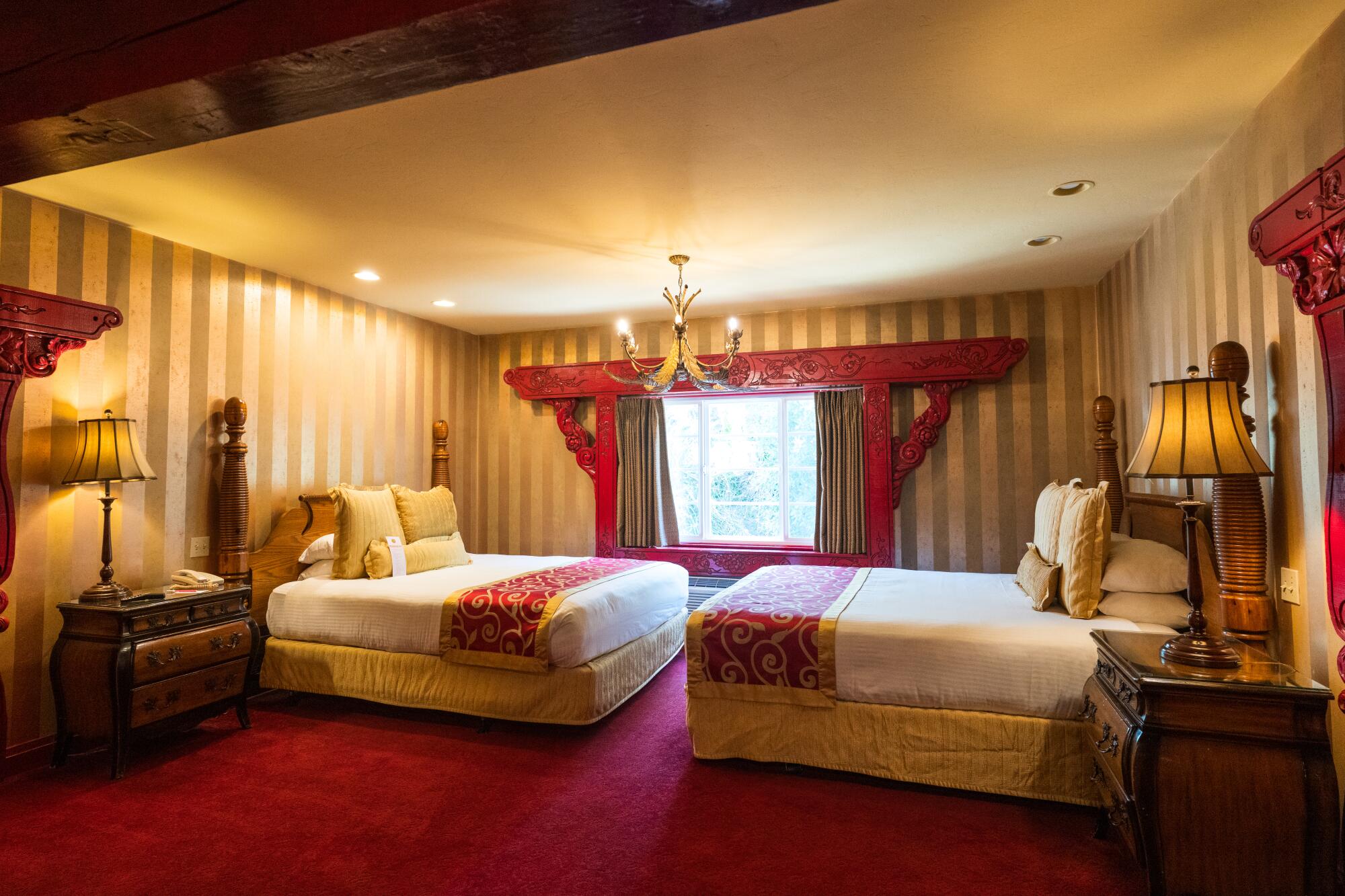
A decorative room at the Madonna Inn.
(Nic Coury / For The Times)
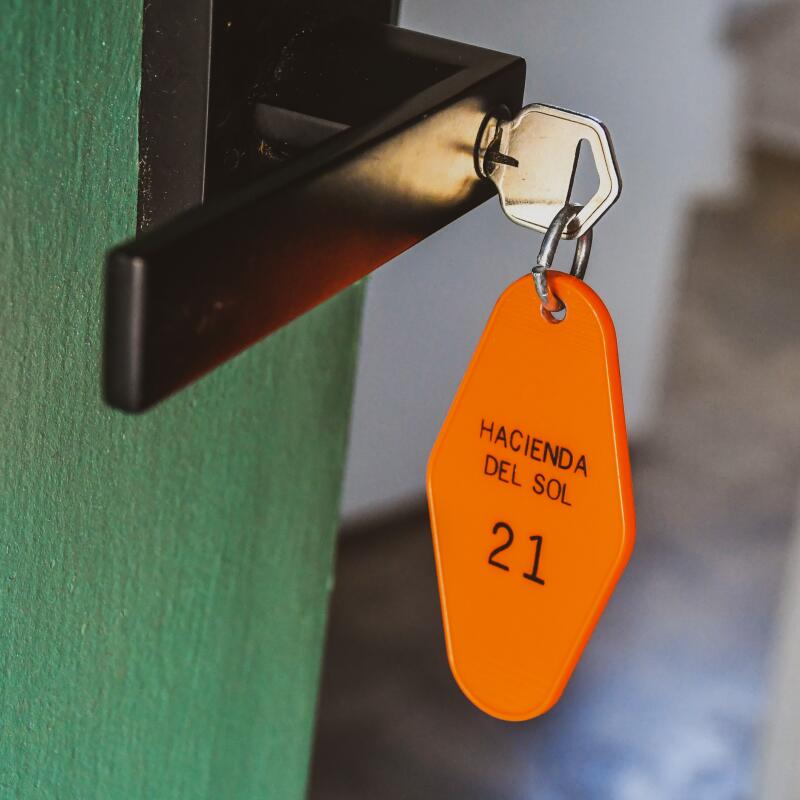
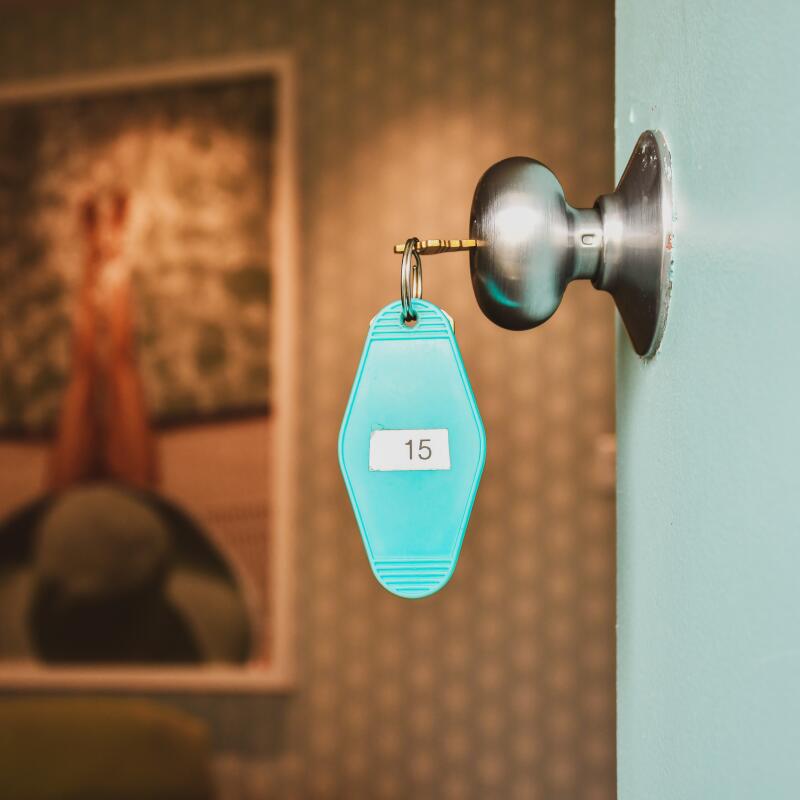
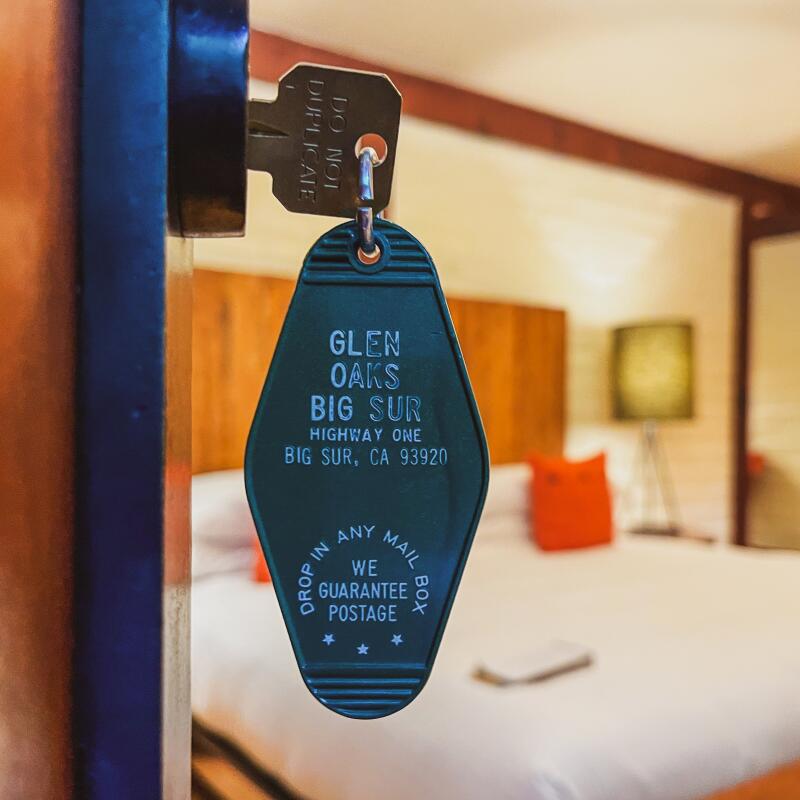
Old-school keys from the Hacienda del Sol, from left, in Borrego Springs, the Skylark Hotel in Riverside and Glen Oaks Resort Adobe Motor Lodge. (Christopher Reynolds / Los Angeles Times)
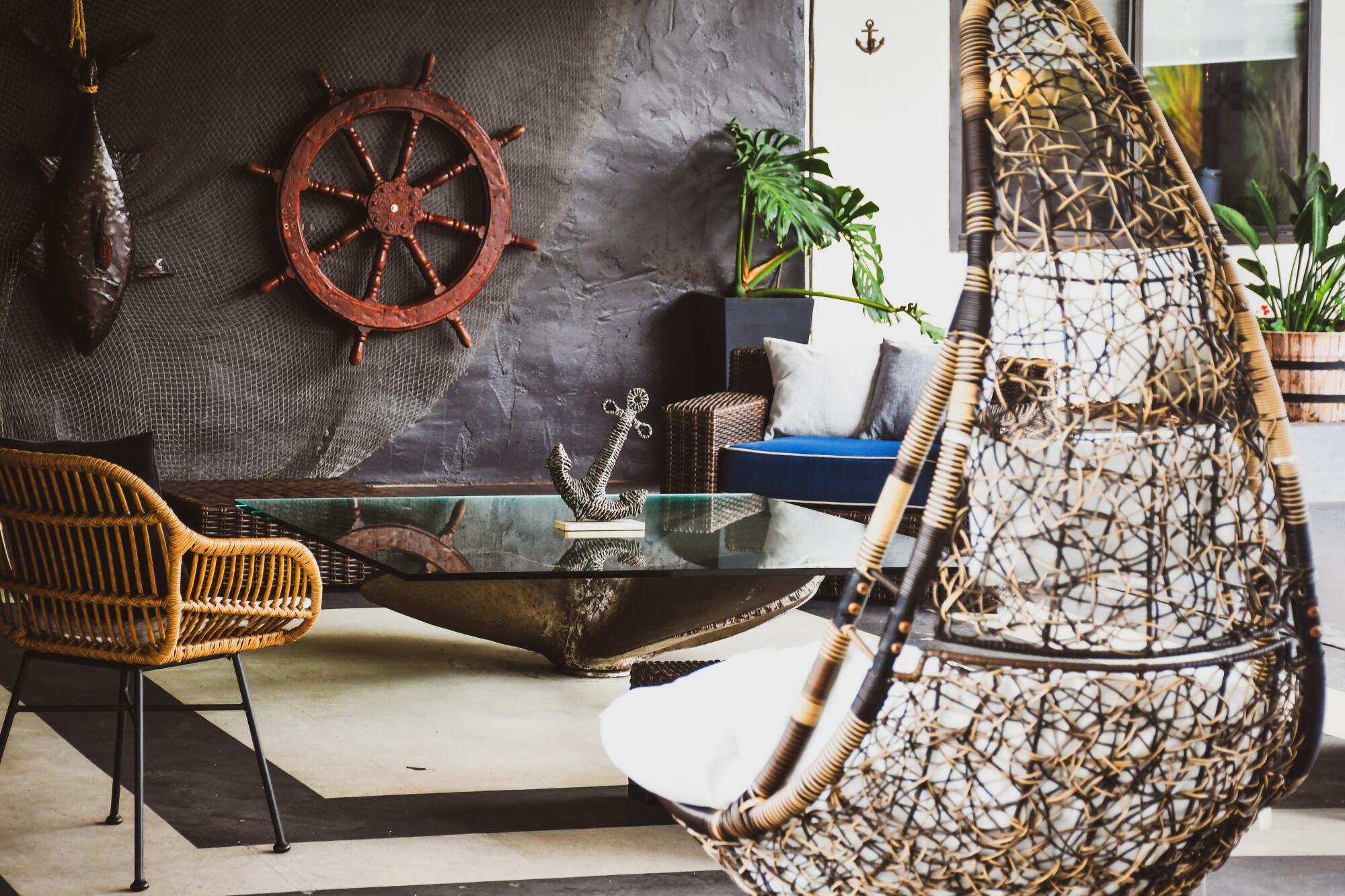
A gathering space at the Haley Hotel in Santa Barbara.
(Christopher Reynolds / Los Angeles Times)
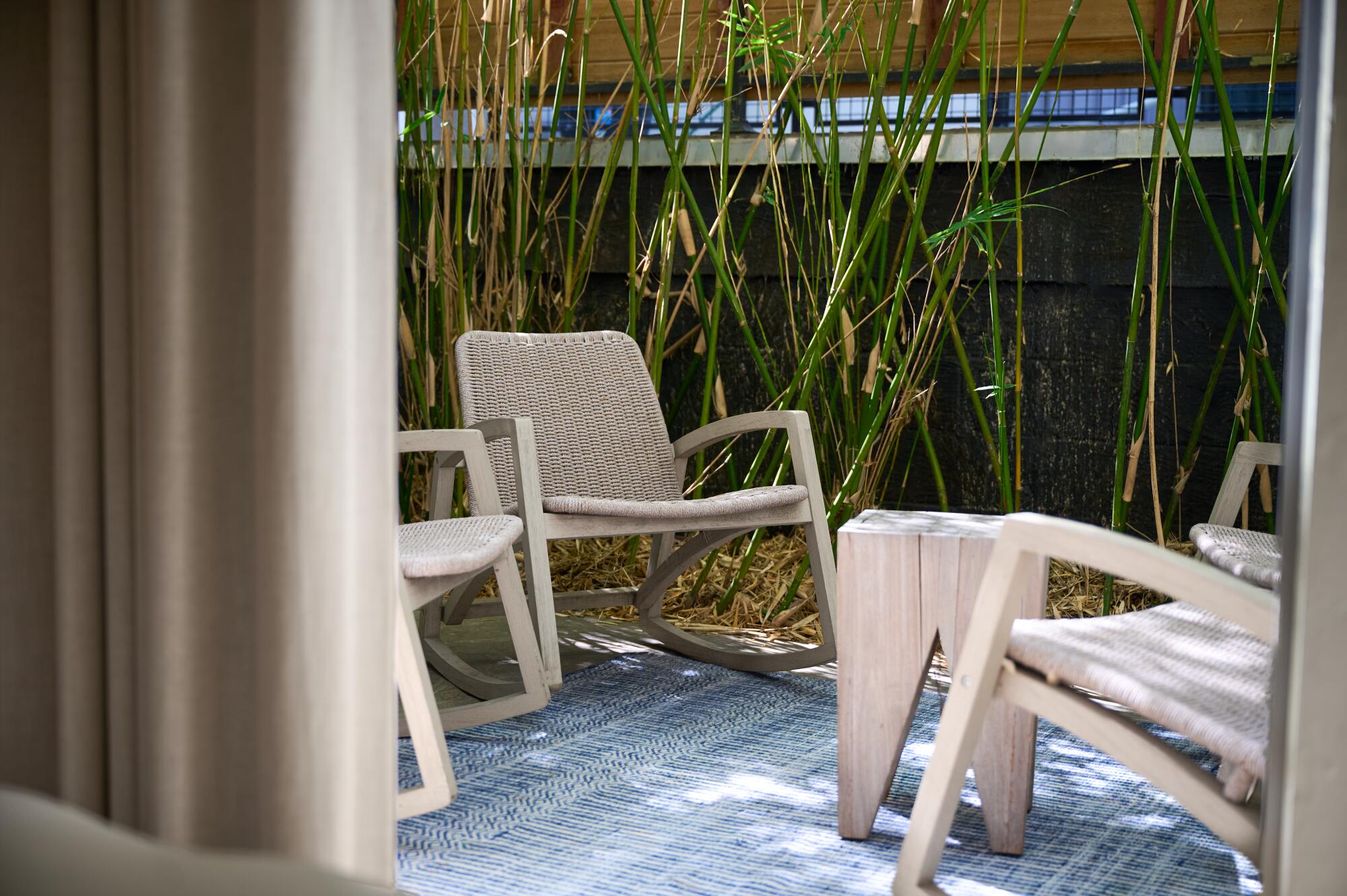
A view of an outdoor space connected to a room at the Pearl Hotel.
(Megan Morello / For The Times)
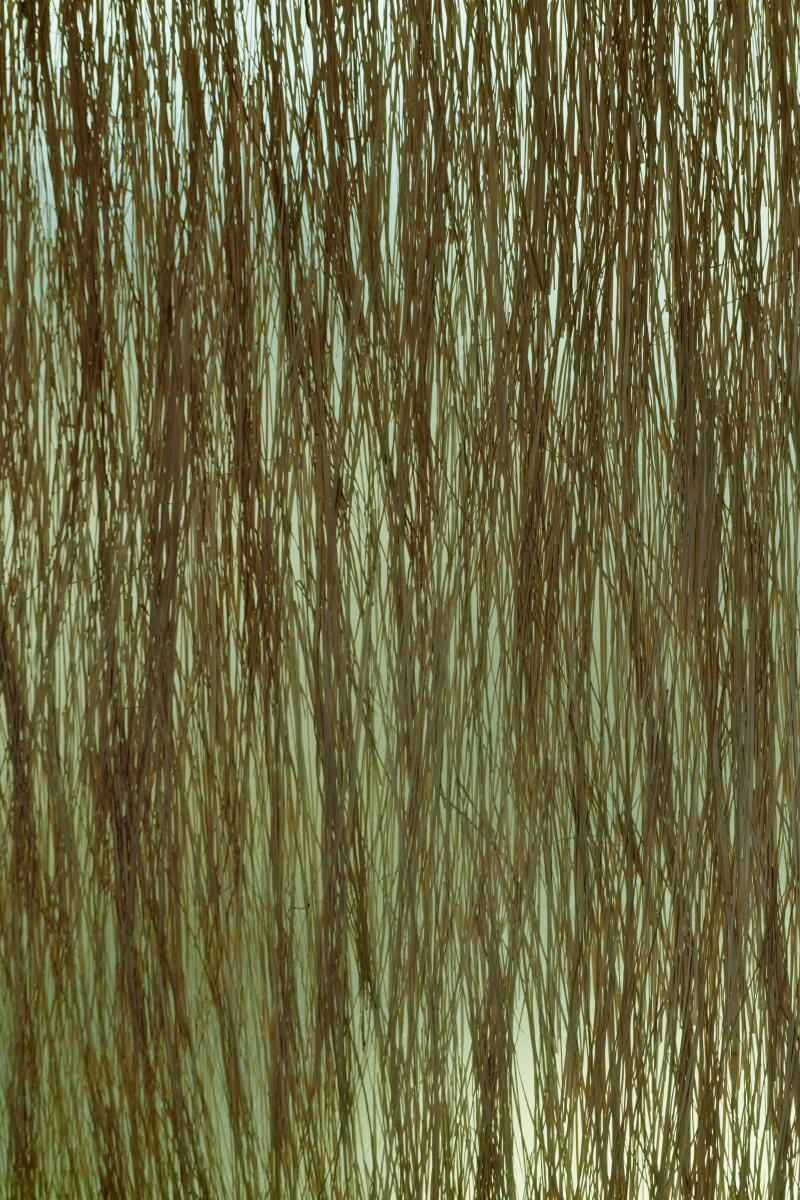
A detail of a bedroom door at the Mojave Sands Motel. (David Fouts / For The Times)
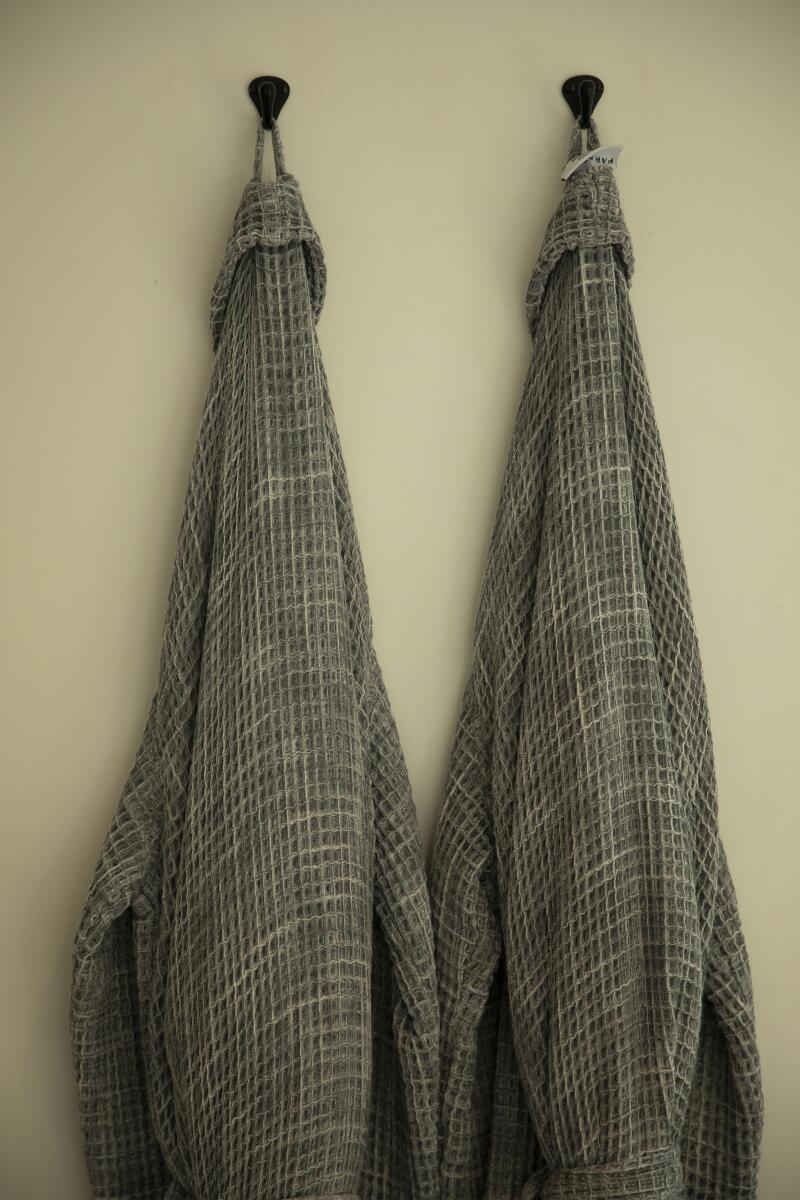
Two robes hang in a room at the Surfrider Malibu. (Al Seib / For The Times)
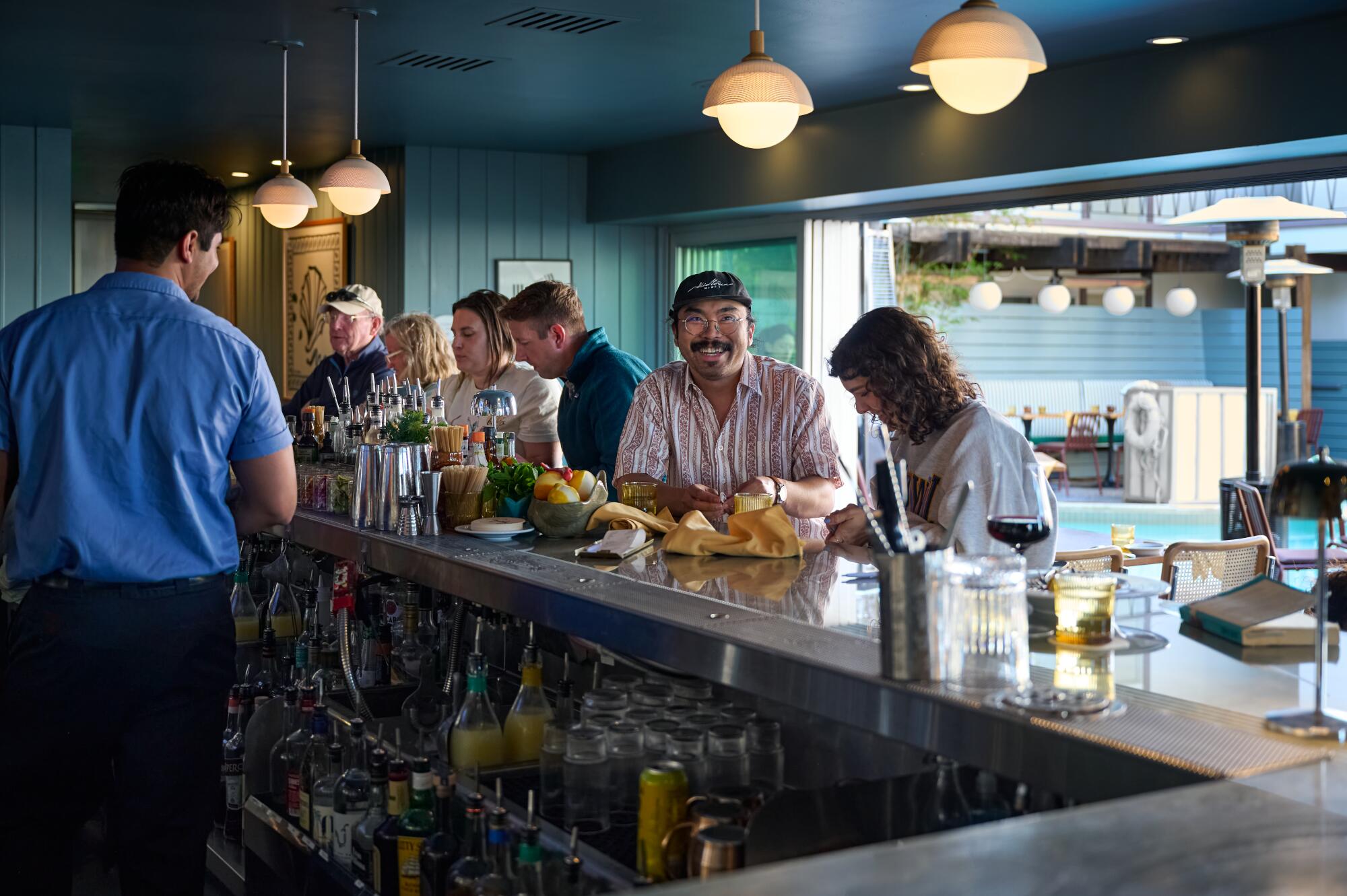
Happy guests at restaurant-bar Ponyboy at the Pearl Hotel in San Diego.
(Megan Morello / For The Times)
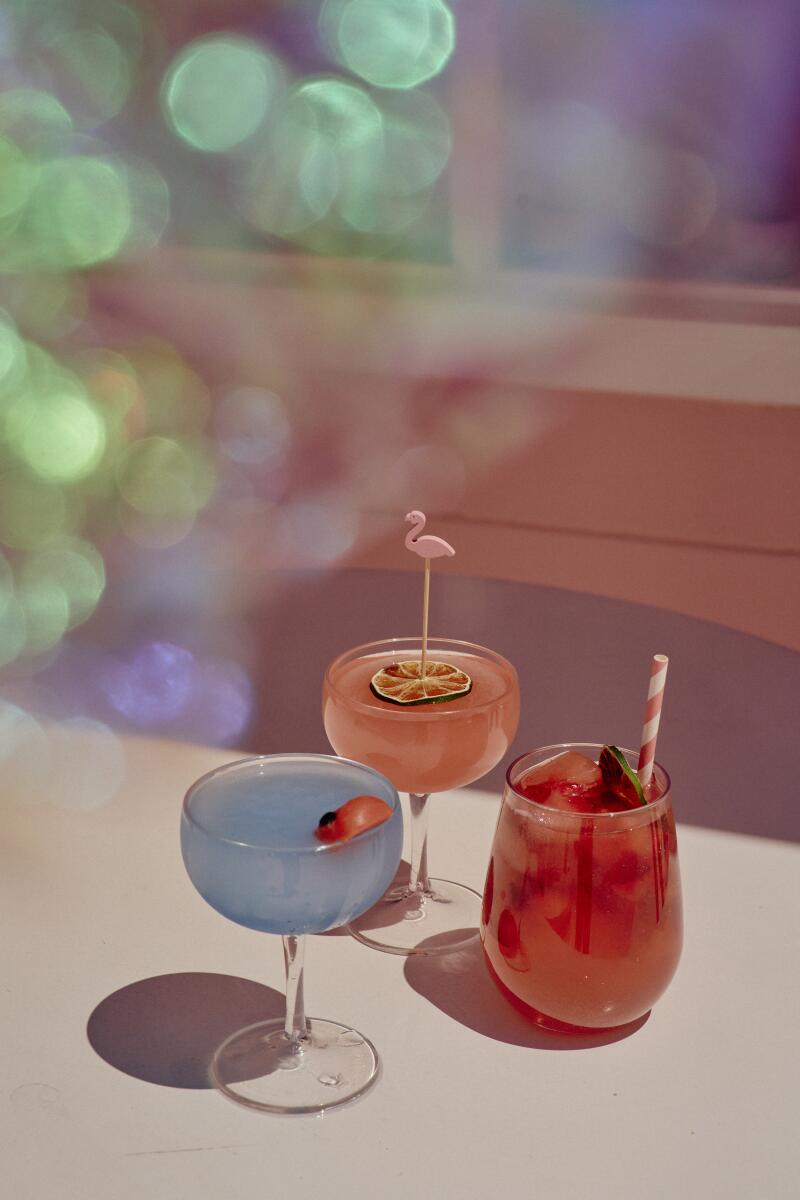
Cocktails served at the Trixie Motel in Palm Springs. (David Fouts / For The Times)
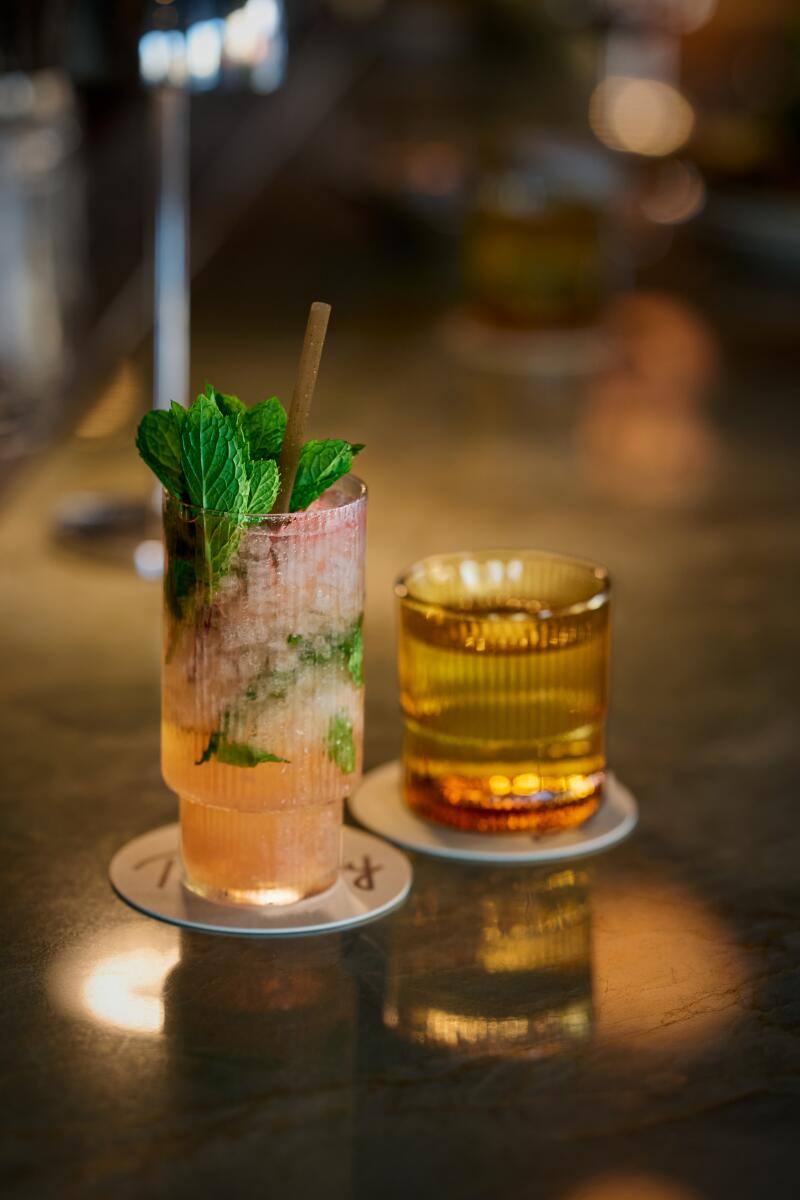
The cocktails at Ponyboy at the Pearl Hotel in San Diego. (Megan Morello / For The Times)
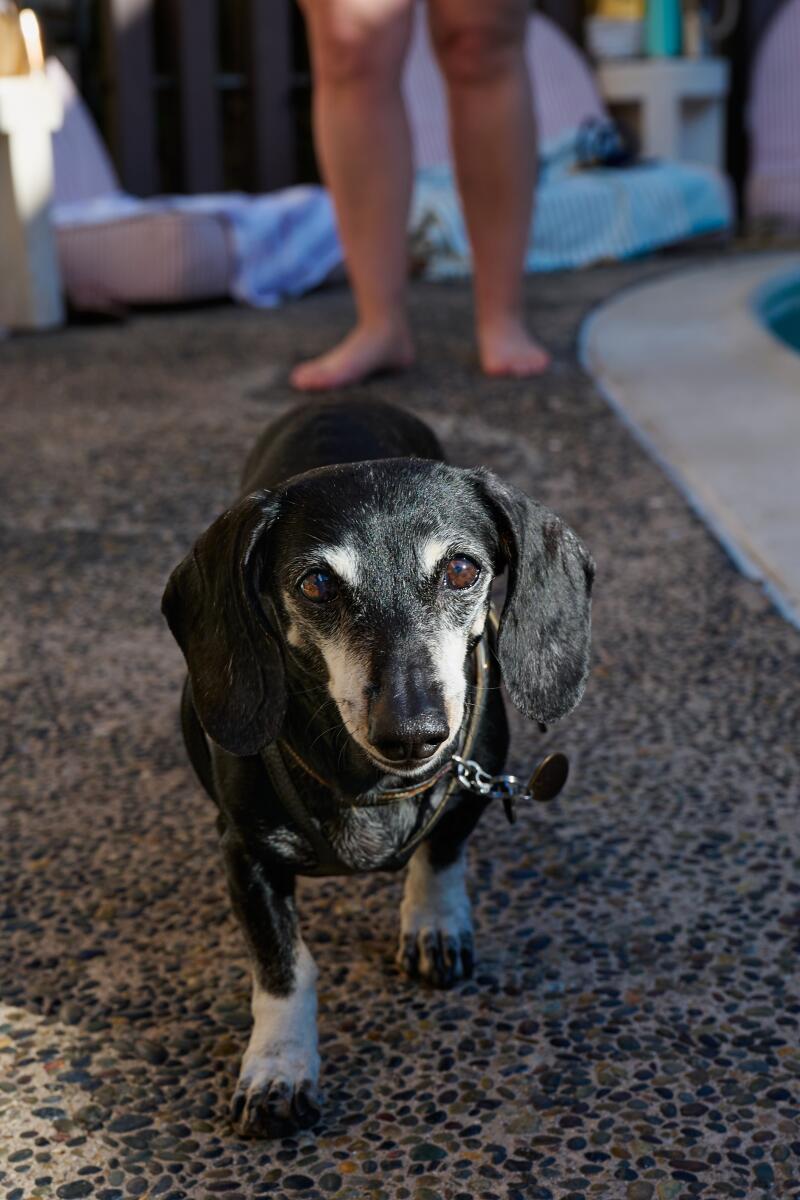
A guest’s dog wanders near the pool area of the Pearl in San Diego. (Megan Morello / For The Times)
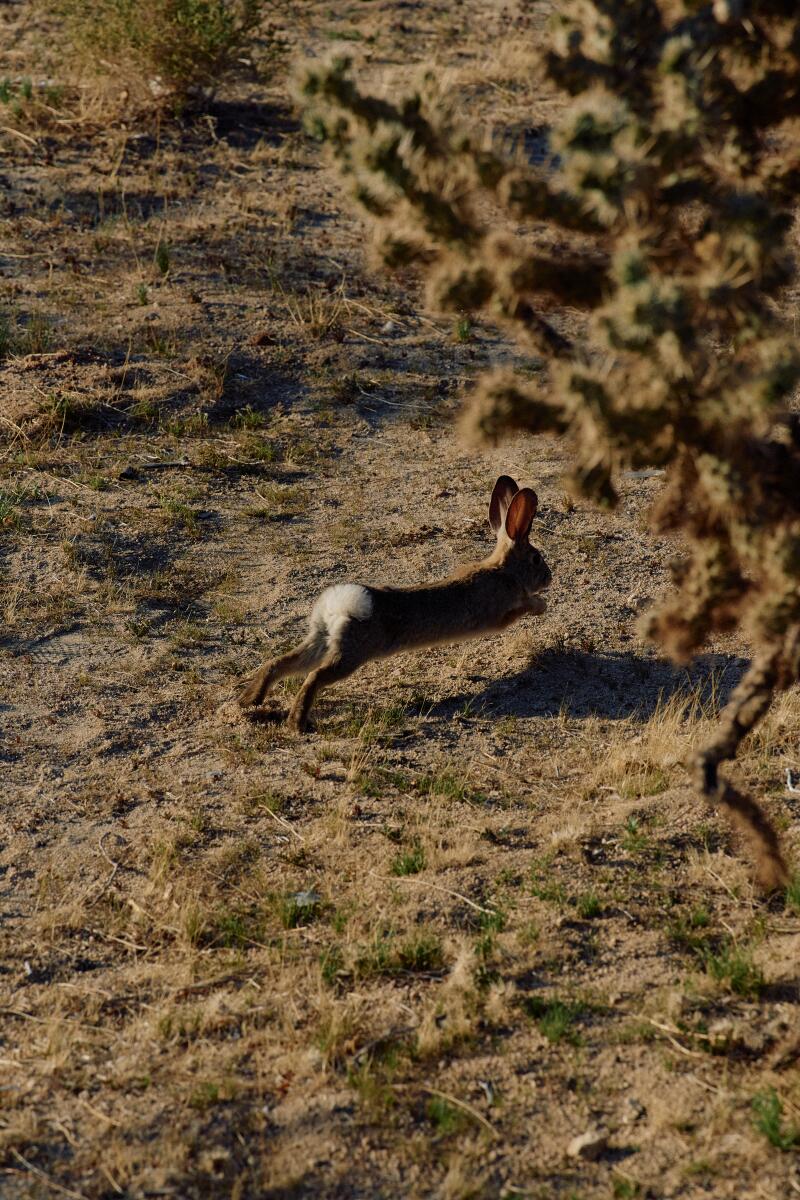
A rabbit hops away at the Mojave Sands Motel in Joshua Tree. (David Fouts / For The Times)
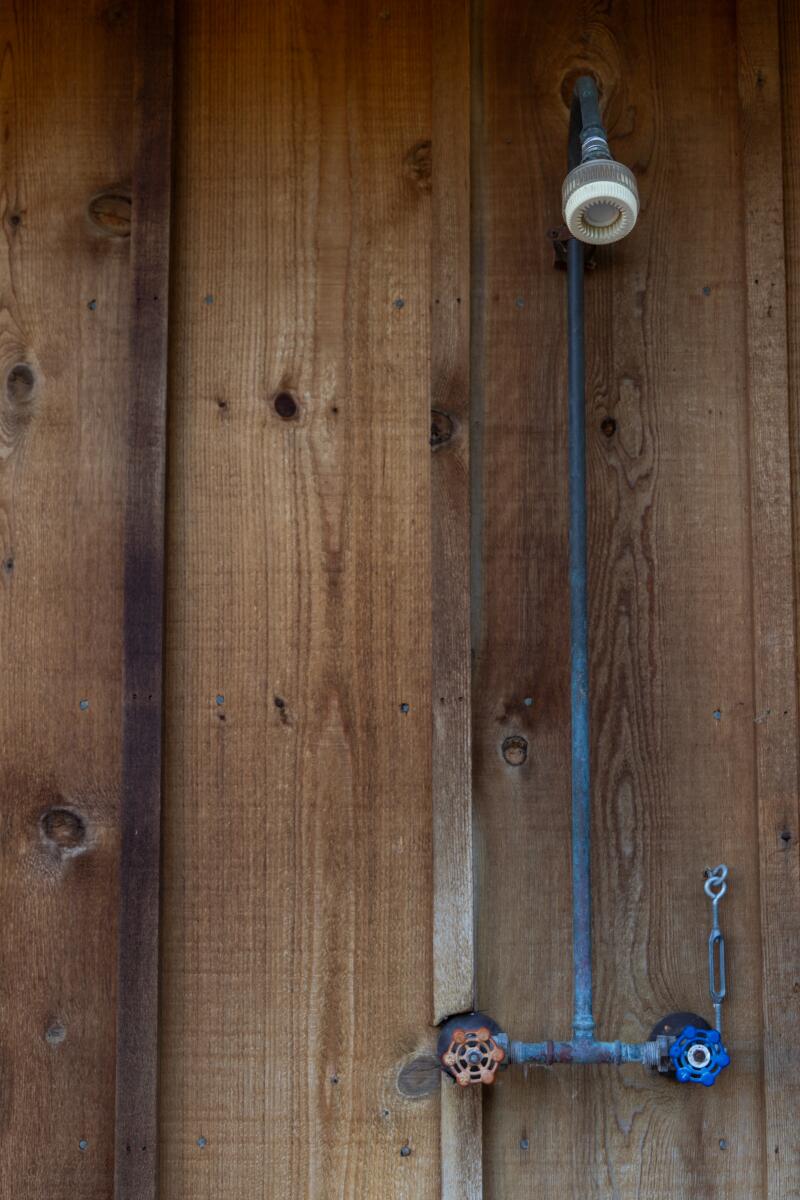
The outdoor shower at the Skyview Motel. (Juliana Yamada / Los Angeles Times)
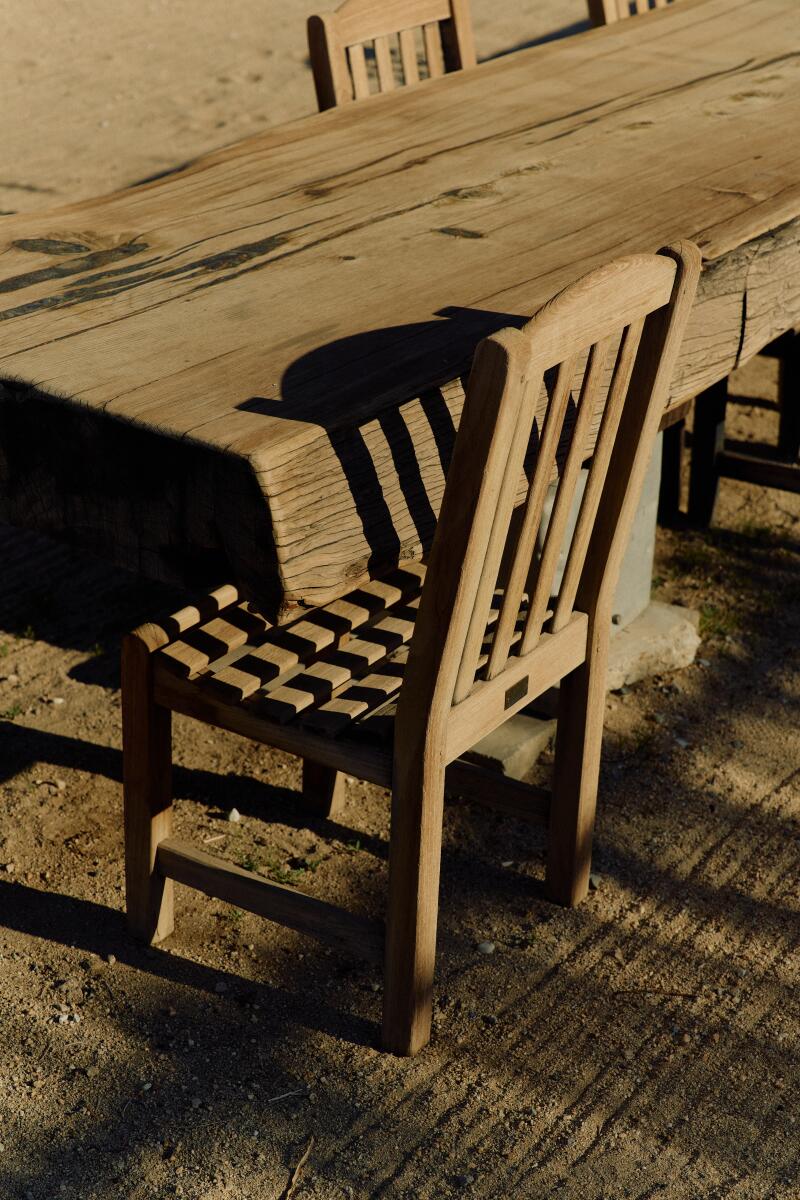
A wooden outdoor patio chair at the Mojave Sands Motel in Joshua Tree. (David Fouts / For The Times)
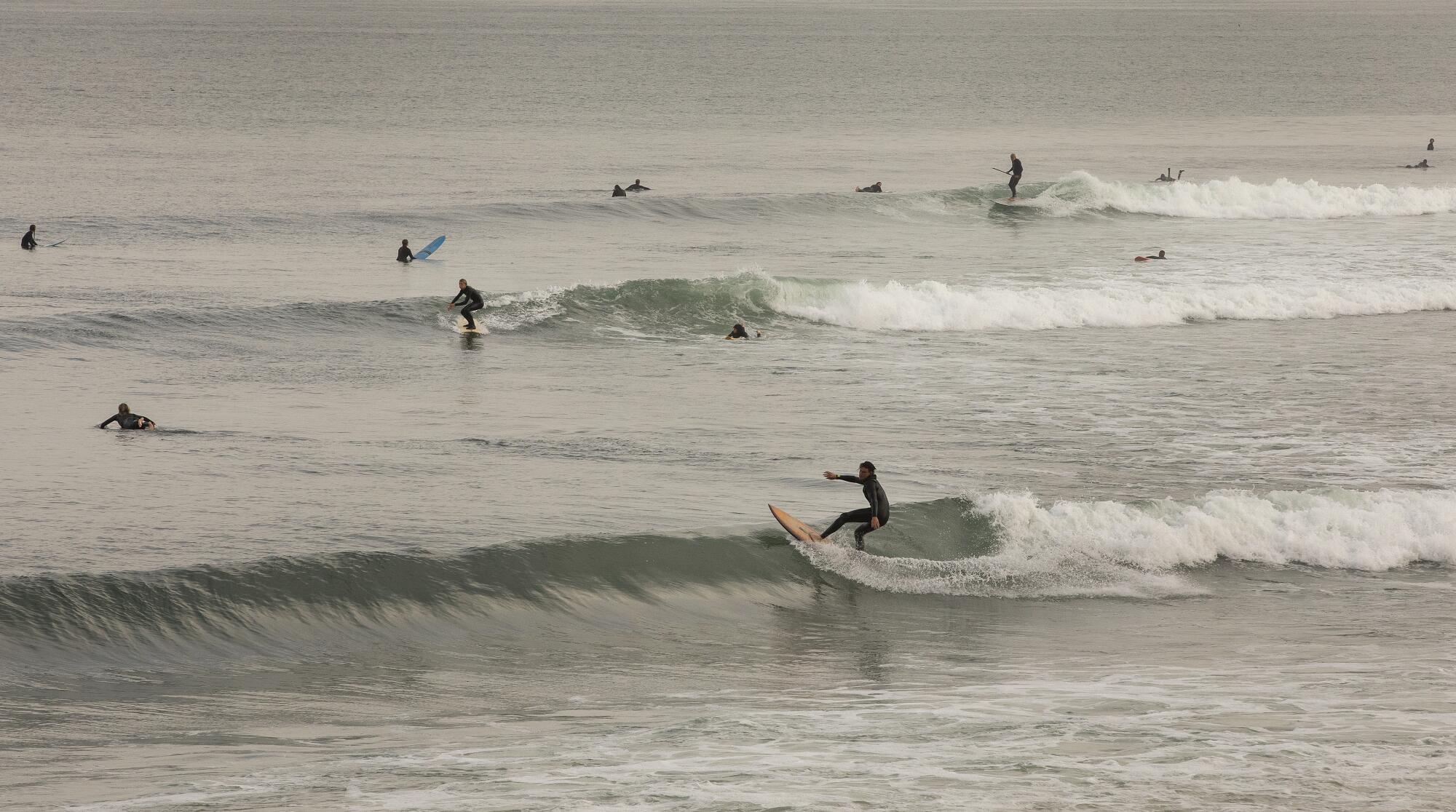
The Surfrider Malibu is located across Pacific Coast Highway from the Malibu Pier and Surfrider Beach, famous for its surfing, and is close to the Santa Monica Mountains National Recreation Area.
(Al Seib / For The Times)
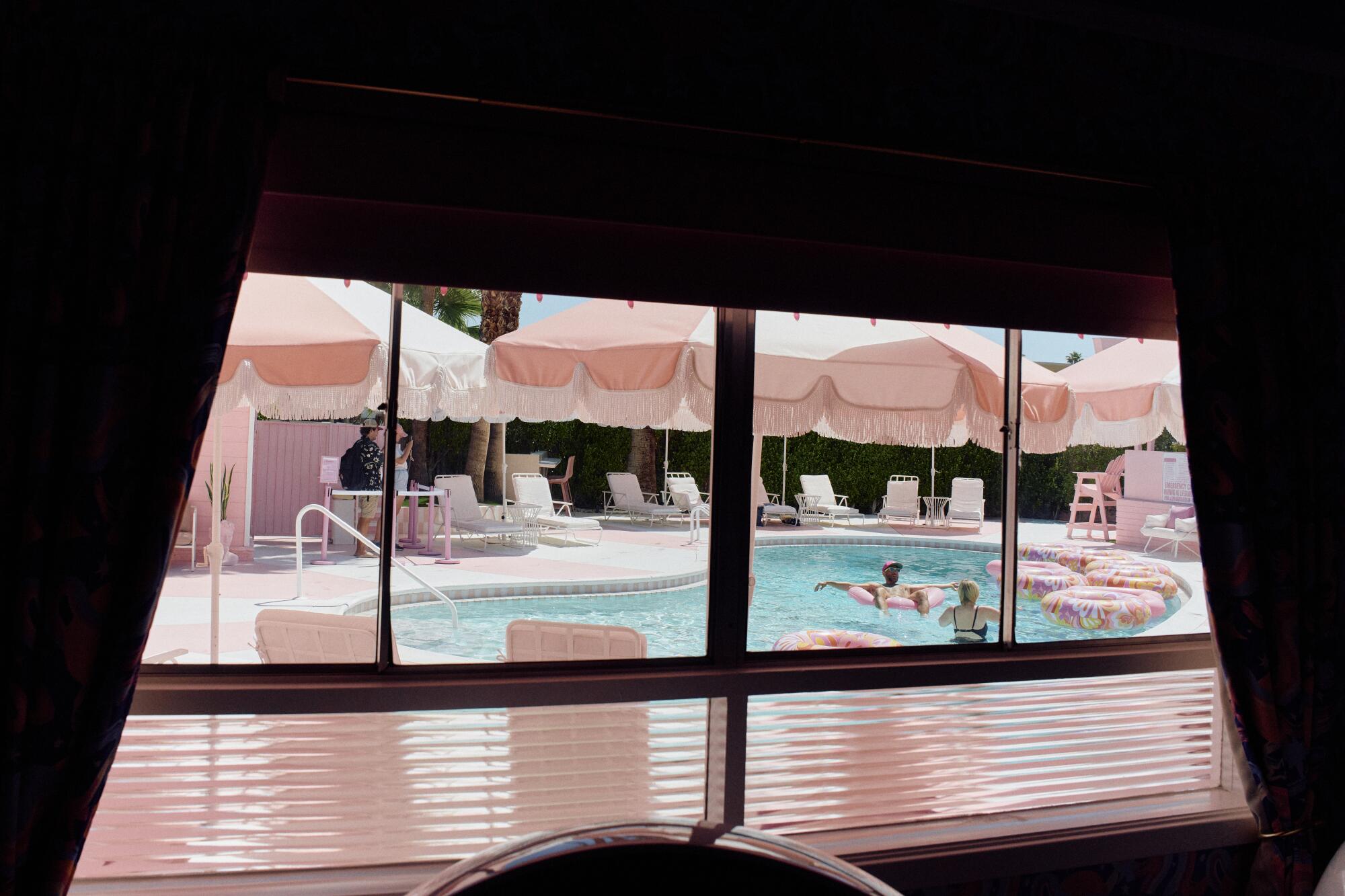
A view of the pool from inside the property at the Trixie Motel in Palm Springs.
(David Fouts / For The Times)
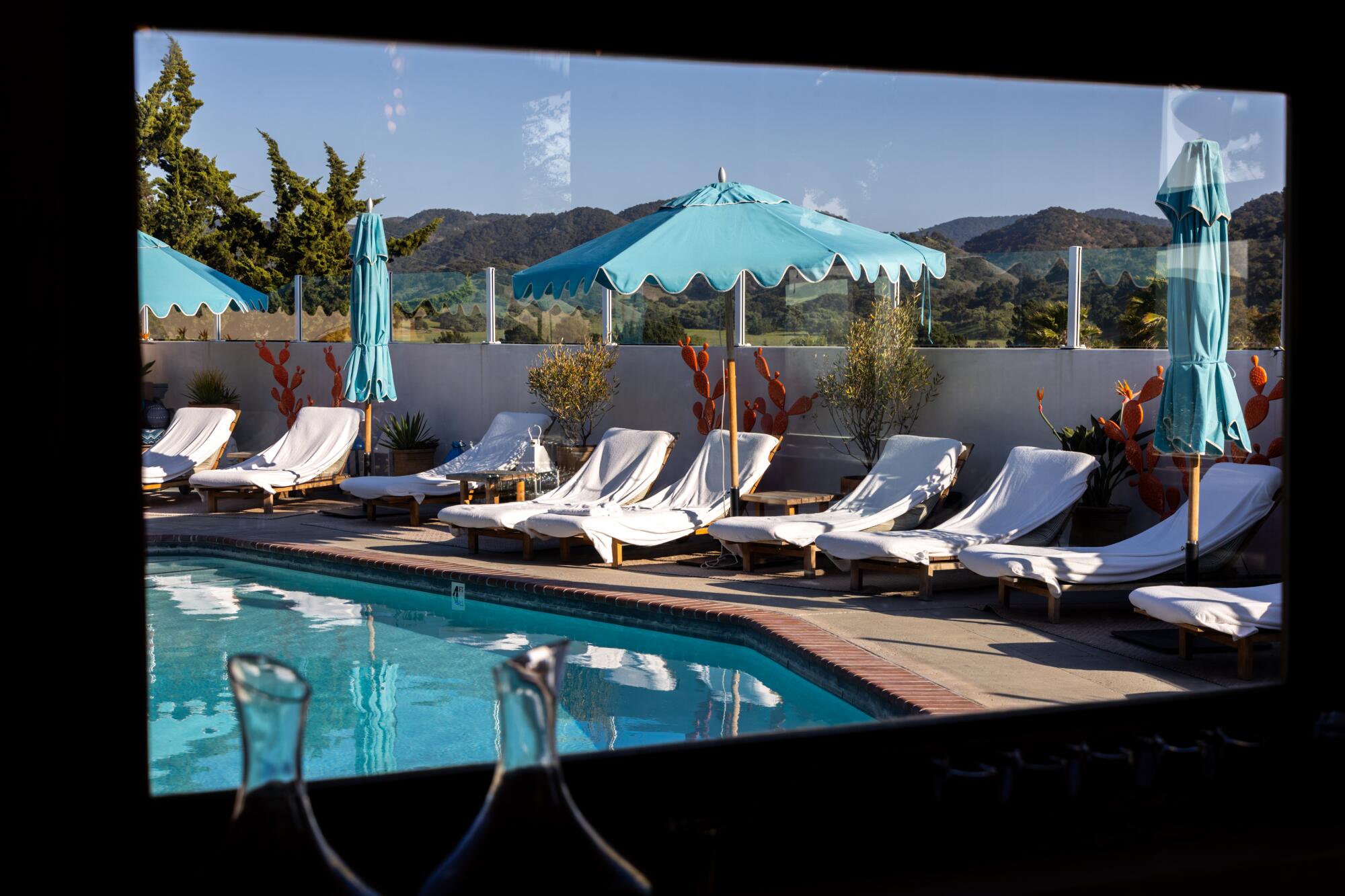
The pool at the Skyview Motel is seen through a window at the Norman restaurant.
(Juliana Yamada / Los Angeles Times)
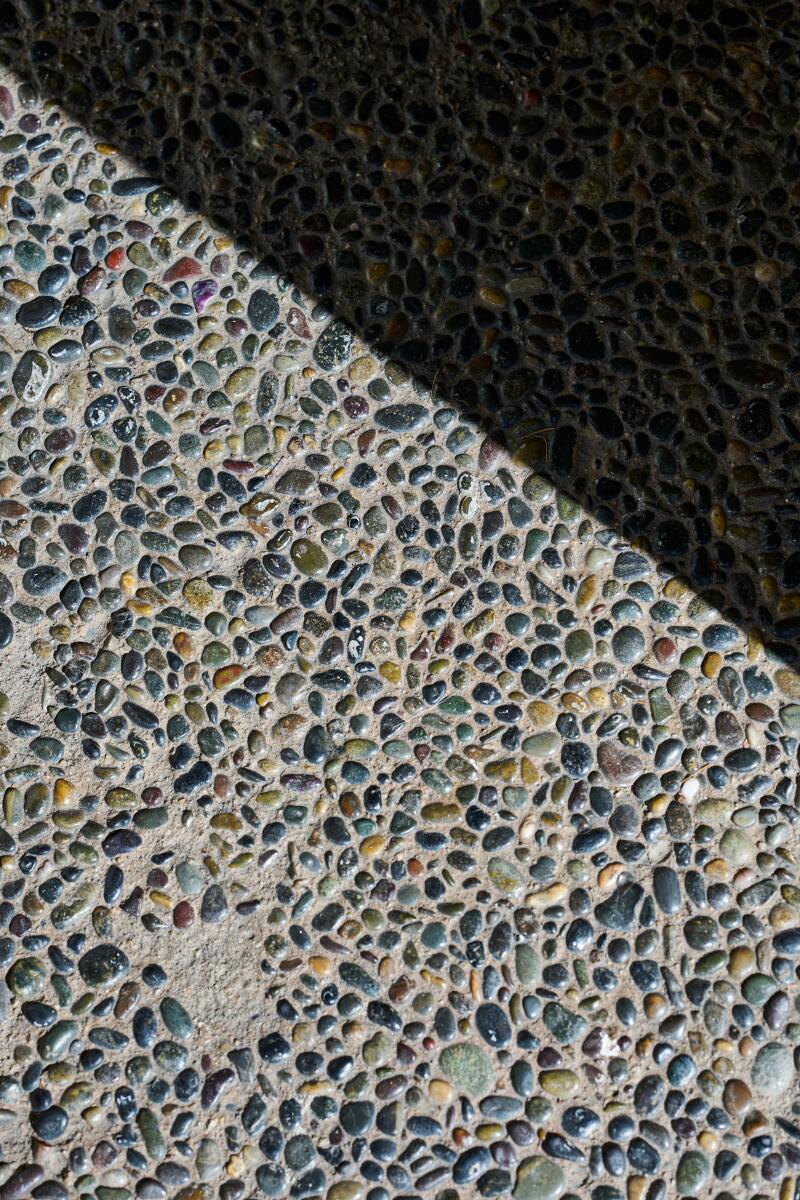
Pool-side textures on the grounds of the Pearl Hotel. (Megan Morello / For The Times)
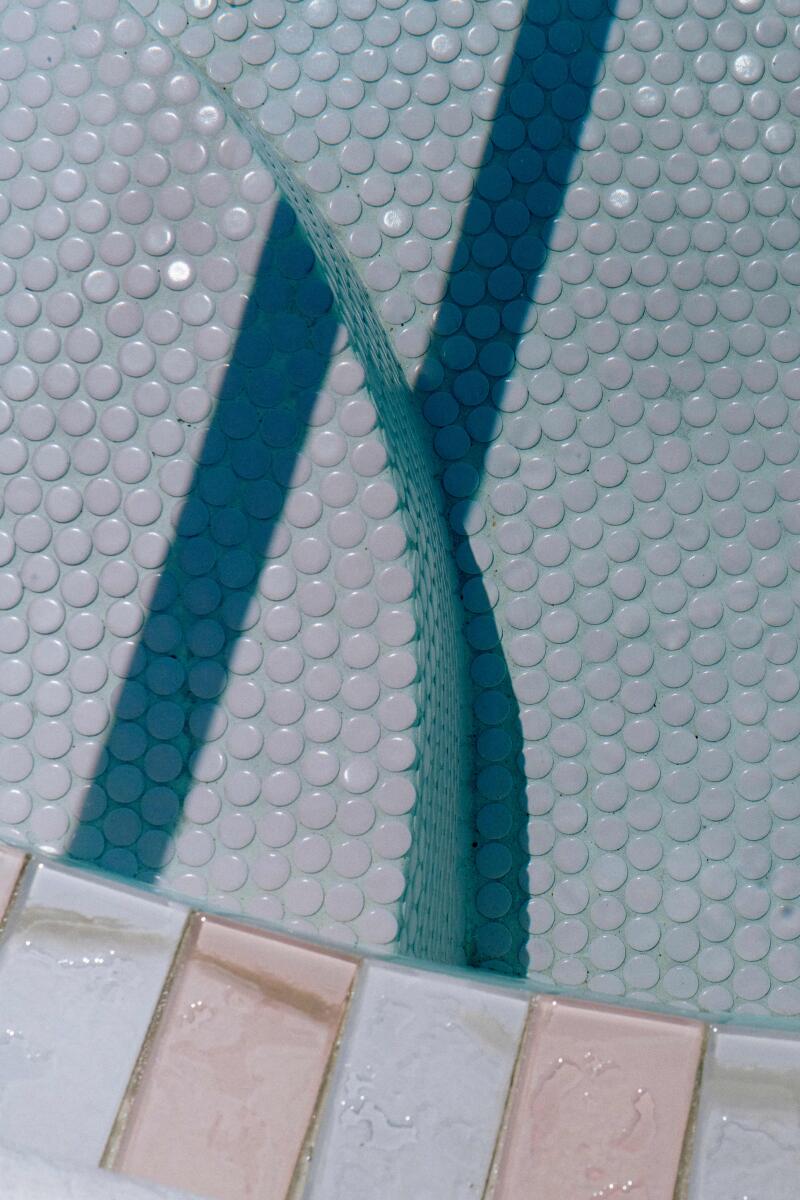
The pool steps at the Trixie Motel. (David Fouts / For The Times)
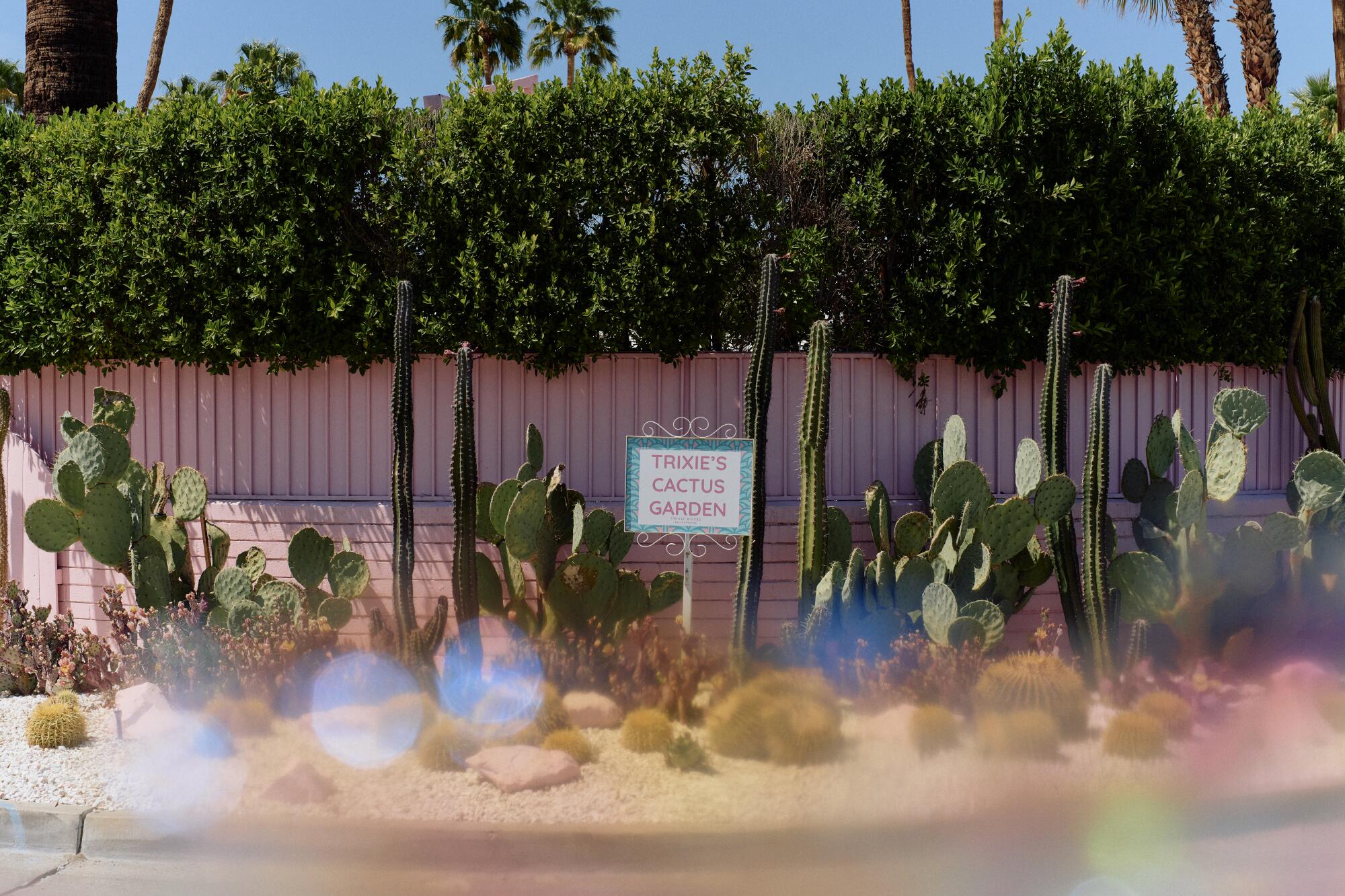
The cactus garden at the Trixie Motel.
(David Fouts / For The Times)


